
by Ria Olivier | Jul 15, 2020 | Discover, Research, SA Agulhas II, SANAP, Science, SEAmester, Southern Ocean, STEM, Women in Science



 Isabelle as a child always wanted to be an oceanographer. “When I was 13 my father sent me off for 6 months on a Tall Ship to sail around Africa. And so, having grown up on sailing ships and sailing the world at a very young age it seemed only natural to follow in my passion to build a career around the sea.
Isabelle as a child always wanted to be an oceanographer. “When I was 13 my father sent me off for 6 months on a Tall Ship to sail around Africa. And so, having grown up on sailing ships and sailing the world at a very young age it seemed only natural to follow in my passion to build a career around the sea.


 I first studied at Plymouth University in the UK, where I completed a BSc in Ocean Sciences in 1992. I came to South Africa in 1993 and under the mentorship of Professor Lutjeharms in the Oceanography Department at UCT I started to turn this passion into a sea-going academic career.
I first studied at Plymouth University in the UK, where I completed a BSc in Ocean Sciences in 1992. I came to South Africa in 1993 and under the mentorship of Professor Lutjeharms in the Oceanography Department at UCT I started to turn this passion into a sea-going academic career.


 One of my first jobs at UCT was to gain seagoing experience in working with all ship-based equipment. I loved being at sea and felt that after my many experiences on both national and international research vessels that I would be good at teaching practical oceanography. And so began a long period of sea-going adventures between 1996 and 2016 in which UCT Honours students were taken to sea onboard the old SA Agulhas I and from 2012 the new SA Agulhas II. The training was always part of the 5 week Prince Edward Island relief voyage and in those days students had to work the winches, drive the CTD software, work up the data for mini-projects!
One of my first jobs at UCT was to gain seagoing experience in working with all ship-based equipment. I loved being at sea and felt that after my many experiences on both national and international research vessels that I would be good at teaching practical oceanography. And so began a long period of sea-going adventures between 1996 and 2016 in which UCT Honours students were taken to sea onboard the old SA Agulhas I and from 2012 the new SA Agulhas II. The training was always part of the 5 week Prince Edward Island relief voyage and in those days students had to work the winches, drive the CTD software, work up the data for mini-projects!

 Isabelle’s Working Life: “I was employed as a lecturer at UCT in 2006 and have worked hard to build a career both nationally and internationally in observational oceanography. My passion and love for the sea can be seen in the many opportunities that I create for students both at UCT, and as can be seen from the SEAmester Floating University across the entire country. I was the first female PhD graduate in Oceanography at UCT in 2000, I am the only female Full Professor in the Oceanography Department and the first female Head of Department in 2016. “
Isabelle’s Working Life: “I was employed as a lecturer at UCT in 2006 and have worked hard to build a career both nationally and internationally in observational oceanography. My passion and love for the sea can be seen in the many opportunities that I create for students both at UCT, and as can be seen from the SEAmester Floating University across the entire country. I was the first female PhD graduate in Oceanography at UCT in 2000, I am the only female Full Professor in the Oceanography Department and the first female Head of Department in 2016. “


 What drives me:” I love teaching students. Taking a student to sea and watching them learn and seeing their eyes light up when they first board the SA Agulhas II is extremely rewarding. Many of my former students have returned to sea either as senior researchers leading their own cohort of students, or they have built their career in marine management or moved into the academic field. It is so rewarding see young inexperienced students join a cruise and leave imbued with a new confidence and a passion for their discipline.
What drives me:” I love teaching students. Taking a student to sea and watching them learn and seeing their eyes light up when they first board the SA Agulhas II is extremely rewarding. Many of my former students have returned to sea either as senior researchers leading their own cohort of students, or they have built their career in marine management or moved into the academic field. It is so rewarding see young inexperienced students join a cruise and leave imbued with a new confidence and a passion for their discipline.
 “I am proud of the SEAmester programme and how we have been able to develop linkages with traditionally non marine universities both through their students joining as SEAmester students or their own Lecturers joining the academic programme. The state-of-the-art research vessel, SA Agulhas II, provides such an incredible teaching and research platform for this programme; its size, comfort and shipboard facilities allow groups of 46 students and 30 lecturers to productively interact over a period of 10 days as can the photo of Prof Gammon teaching students in the ship’s stairwell shows so well!.”
“I am proud of the SEAmester programme and how we have been able to develop linkages with traditionally non marine universities both through their students joining as SEAmester students or their own Lecturers joining the academic programme. The state-of-the-art research vessel, SA Agulhas II, provides such an incredible teaching and research platform for this programme; its size, comfort and shipboard facilities allow groups of 46 students and 30 lecturers to productively interact over a period of 10 days as can the photo of Prof Gammon teaching students in the ship’s stairwell shows so well!.”
 My advice to the young generation: “Four words – always take the initiative! In the UK the only sea-going opportunity I had was to work on the River Tamar outside of Plymouth! In South Africa our students go to Antarctica! But it takes you to make that difference. We have so many wonderful opportunities in South Africa and access to such incredible marine programmes and platforms but the sparkplug to get started must come from you. All academics get frustrated by students not willing to engage with their surroundings and
My advice to the young generation: “Four words – always take the initiative! In the UK the only sea-going opportunity I had was to work on the River Tamar outside of Plymouth! In South Africa our students go to Antarctica! But it takes you to make that difference. We have so many wonderful opportunities in South Africa and access to such incredible marine programmes and platforms but the sparkplug to get started must come from you. All academics get frustrated by students not willing to engage with their surroundings and  not even realise the enormous privilege it is to be on a research vessel such as the SA Agulhas II. You don’t have to be the brightest student in the class but by staying engaged, enthusiastic, interactive and dedicated to your studies you will always go much further in life. Opportunities are endless but it takes you to grab it!”
not even realise the enormous privilege it is to be on a research vessel such as the SA Agulhas II. You don’t have to be the brightest student in the class but by staying engaged, enthusiastic, interactive and dedicated to your studies you will always go much further in life. Opportunities are endless but it takes you to grab it!”
Text and Images supplied by Isabbelle Ansorge.
Visit SANAP website on Isabelle Ansorge’s current research projects within the program. Also see Sunday Science on SEAmester
https://youtu.be/0LUpdr-masA

by Ria Olivier | Jul 13, 2020 | Research, SANAP, Science, SEAmester, sub-Antarctic, Take-Over Operations
 Family hikes and visits to game reserves instilled in me a keen interest in the natural world at an early age. This led to a BSc and BSc hons in Zoology at the University of the Witwatersrand. This was followed by the first of three year-long expeditions to Marion Island. While on Marion Island I worked for the Mammal Research Institute of the University of Pretoria, as part of the Marine Mammal Programme. Trips to Marion Island were followed by several summer seasons as a field biologist on Bouvet Island, a Norwegian possession in the Southern Ocean. I subsequently worked as a fisheries biologist in Namibia before returning to Pretoria to complete my MSc on the behavioural ecology of elephant seals.
Family hikes and visits to game reserves instilled in me a keen interest in the natural world at an early age. This led to a BSc and BSc hons in Zoology at the University of the Witwatersrand. This was followed by the first of three year-long expeditions to Marion Island. While on Marion Island I worked for the Mammal Research Institute of the University of Pretoria, as part of the Marine Mammal Programme. Trips to Marion Island were followed by several summer seasons as a field biologist on Bouvet Island, a Norwegian possession in the Southern Ocean. I subsequently worked as a fisheries biologist in Namibia before returning to Pretoria to complete my MSc on the behavioural ecology of elephant seals.


 Above (l-r) : Greg(middle) to leave for Bouvet; Greg on Marion Island; Greg on Bouvet Island
Above (l-r) : Greg(middle) to leave for Bouvet; Greg on Marion Island; Greg on Bouvet Island
 I took up my current employment in 2006 as marine mammal biologist at the Port Elizabeth Museum at Bayworld. While at the PEM, I completed a PhD, also on elephant seals. I am currently curator of the marine mammal collection at the PEM, and am thus responsible for the Southern Hemisphere’s largest marine mammal collection. This comprises over 6 000 specimens of more than 50 species. It continues to grow by some 30-40 specimens per year and is used by researchers from all over the world.
I took up my current employment in 2006 as marine mammal biologist at the Port Elizabeth Museum at Bayworld. While at the PEM, I completed a PhD, also on elephant seals. I am currently curator of the marine mammal collection at the PEM, and am thus responsible for the Southern Hemisphere’s largest marine mammal collection. This comprises over 6 000 specimens of more than 50 species. It continues to grow by some 30-40 specimens per year and is used by researchers from all over the world.
Why you love your career in science?


 When I was very young I was keen to become a game ranger. While in high school this had morphed into being a zoologist. And this is the career that I was lucky enough to follow. It has given me wonderful opportunities and allowed me to do some fascinating things. I had always wanted to work in wild places and so arriving on Marion Island for the first time was like arriving in paradise. Before the end of my first year, I new that I had to return. I loved every moment on this rough place. Not only was it beautiful and challenging, but it also allowed one the opportunity to observe animals fairly closely and wonder about their way of life and behaviour. How did these very distant relatives of our survive in an environment so hostile to us? Thus it was also intellectually stimulating. And I have loved to return to wild places and ask questions about the natural work ever since.
When I was very young I was keen to become a game ranger. While in high school this had morphed into being a zoologist. And this is the career that I was lucky enough to follow. It has given me wonderful opportunities and allowed me to do some fascinating things. I had always wanted to work in wild places and so arriving on Marion Island for the first time was like arriving in paradise. Before the end of my first year, I new that I had to return. I loved every moment on this rough place. Not only was it beautiful and challenging, but it also allowed one the opportunity to observe animals fairly closely and wonder about their way of life and behaviour. How did these very distant relatives of our survive in an environment so hostile to us? Thus it was also intellectually stimulating. And I have loved to return to wild places and ask questions about the natural work ever since.

 If you want to become a scientist, do what you love. It is a tough career that requires
If you want to become a scientist, do what you love. It is a tough career that requires
many long hours and much dedication. You will only succeed in this if you are fascinated by what you are doing. Also, if you are reasonably good and enthusiastic about what you are doing, a number of opportunities should come your way. Seize each one. Then, doing science gives you a real opportunity to make a difference. While science is an unparalleled means of understanding the world, it also offers opportunities to make the world a better place, for all life in it, including humans.
Text and images supplied by Greg Hofmeyr.

by Ria Olivier | Jun 23, 2020 | Uncategorised
 The SANAP symposiums is: “..the perfect platform for diverse disciplines to “cross-fertilise” ideas often leading to collaborations. It is an exciting community; the people are so different, but the focus is on the same problems in the same place.” – Rosemary Dorrington
The SANAP symposiums is: “..the perfect platform for diverse disciplines to “cross-fertilise” ideas often leading to collaborations. It is an exciting community; the people are so different, but the focus is on the same problems in the same place.” – Rosemary Dorrington
 The 6th SANAP biannual symposium would have taken place this week; now postponed because of COVID-19. SCAR2020 has been cancelled and many more conferences, symposia and meetings. However, our SANAP platform allows us to continue to showcase our projects and highlight the work that we do. Therefore we need to utilize the mediums that are available to us for collaboration and use it to create awareness on national and international level.
The 6th SANAP biannual symposium would have taken place this week; now postponed because of COVID-19. SCAR2020 has been cancelled and many more conferences, symposia and meetings. However, our SANAP platform allows us to continue to showcase our projects and highlight the work that we do. Therefore we need to utilize the mediums that are available to us for collaboration and use it to create awareness on national and international level.
 The 1st SANAP symposium took place in Stellenbosch in October 2007 over a period of 2 days hosted by Steven Chown of the Stellenbosch University and in 2009 the Symposium was held in Cape Town, on 8-10 February 2009.
The 1st SANAP symposium took place in Stellenbosch in October 2007 over a period of 2 days hosted by Steven Chown of the Stellenbosch University and in 2009 the Symposium was held in Cape Town, on 8-10 February 2009.

 In Grahamstown in 2014 the 3rd Symposium was hosted by Ian Meiklejohn and Rosemary Dorrington of Rhodes University. Rosemary in an interview with the daily dispatch said the following:” The symposium, last held in 2008, brings together researchers from diverse scientific fields including physics, oceanography, marine biology, terrestrial ecology, space science and astronomy.” “She said research was vital to predict consequences of global changes in climate, population resettlement and their impacts on the food chain. “It is one of the most important projects funded by the NRF, it has brought together some of the top people in their fields.”
In Grahamstown in 2014 the 3rd Symposium was hosted by Ian Meiklejohn and Rosemary Dorrington of Rhodes University. Rosemary in an interview with the daily dispatch said the following:” The symposium, last held in 2008, brings together researchers from diverse scientific fields including physics, oceanography, marine biology, terrestrial ecology, space science and astronomy.” “She said research was vital to predict consequences of global changes in climate, population resettlement and their impacts on the food chain. “It is one of the most important projects funded by the NRF, it has brought together some of the top people in their fields.”
 In 2016 the 4th SANAP symposium was held at Pretoria University organized by Don Cowan, Thulani Makhlanyane and Miss Yashini Naidoo.
In 2016 the 4th SANAP symposium was held at Pretoria University organized by Don Cowan, Thulani Makhlanyane and Miss Yashini Naidoo.

 The last and 5th SANAP symposium was held in Hermanus organized by Michael Kosch of SANSA and Kenneth Findlay of CPUT.
The last and 5th SANAP symposium was held in Hermanus organized by Michael Kosch of SANSA and Kenneth Findlay of CPUT.
Even though the symposium for 2020 is postponed the SANAP website will highlight research of those scientists and students that would have presented during this week. (follow social media to read more) The SANAP symposiums abstracts will be made available on the ALSA repository before end of 2020 on Speeches, Talks and Presentations collection. Please note that you are welcome to send us a file(pdf) of any presentation or talk, if you want it to be part of the digital repository. Let us preserve and build the science and research legacy of South Africa in the Antarctic Region, it will ensure that future generations can benefit from our work. The metadata for the 2018 Symposium abstracts has been done, all we need is your pdf of your presentation and this will be added to the repository. (Example: Christel Hansen) Email your pdf to riaolivier@sun.ac.za
Ria Olivier, Antarctic Legacy of South Africa.

by Ria Olivier | Jun 20, 2020 | Antarctica, International Days, Research, SANAE, SANAP, Science

 “Auroras provide direct visual evidence that the atmosphere is shielding life on Earth from the radiation hazards of space.” – Michael Kosch, SANSA.
“Auroras provide direct visual evidence that the atmosphere is shielding life on Earth from the radiation hazards of space.” – Michael Kosch, SANSA.
Today Overwintering Teams are celebrating Midwinter. With this in mind we would like to share some information on Aurora Australis. The research on Auroras in SANAP would be under the jurisdiction of SANSA. Although they do not currently have an aurora program, there is a possibility of doing research on it in the future. The spectacular and beautiful auroras, usually seen at polar latitudes, are caused by high energy particles bombarding the upper-atmosphere. These particles originate from the sun and travel across the void towards Earth as the solar wind, moving at around 500 km/sec.


 About 10% of the solar wind becomes trapped on the Earth’s magnetic field lines in a process called magnetic reconnection, the rest is rejected and flows past the planet into deep space. The trapped particles accumulate, but this cannot go on forever. They are eventually released into the upper-atmosphere in a process called substorms, exciting the atomic oxygen and molecular nitrogen to produce the familiar green and red colours from oxygen, and sometimes the blue colour as well from nitrogen. Charged particles, such as electrons and protons, are constrained to follow the magnetic field lines, and since the Earth’s magnetic field is similar to a dipole bar magnetic, it is only in polar regions where the magnetic field lines reach down to the ground, which is why the auroras appear mostly in polar regions.
About 10% of the solar wind becomes trapped on the Earth’s magnetic field lines in a process called magnetic reconnection, the rest is rejected and flows past the planet into deep space. The trapped particles accumulate, but this cannot go on forever. They are eventually released into the upper-atmosphere in a process called substorms, exciting the atomic oxygen and molecular nitrogen to produce the familiar green and red colours from oxygen, and sometimes the blue colour as well from nitrogen. Charged particles, such as electrons and protons, are constrained to follow the magnetic field lines, and since the Earth’s magnetic field is similar to a dipole bar magnetic, it is only in polar regions where the magnetic field lines reach down to the ground, which is why the auroras appear mostly in polar regions.


 Auroras appear in the height range 100 to 300 km above the Earth’s surface, typically with red, green and blue appearing near the top, middle and bottom, respectively, of this height range. The height of the auroras, and therefore their colour, depends on the energy of the particles, with higher energy able to penetrate to lower altitudes. Auroras are rarely seen at lower latitudes such as South Africa except during major geomagnetic storms, an example of which occurred in 1989 when auroras were visible from Durban.
Auroras appear in the height range 100 to 300 km above the Earth’s surface, typically with red, green and blue appearing near the top, middle and bottom, respectively, of this height range. The height of the auroras, and therefore their colour, depends on the energy of the particles, with higher energy able to penetrate to lower altitudes. Auroras are rarely seen at lower latitudes such as South Africa except during major geomagnetic storms, an example of which occurred in 1989 when auroras were visible from Durban.
 The following are a few articles in the South African Journal on Antarctic Research available on the Antarctic Legacy of South Africa (ALSA) digital repository
The following are a few articles in the South African Journal on Antarctic Research available on the Antarctic Legacy of South Africa (ALSA) digital repository
Geomagnetism and Aurora Programme in Antarctica – Short summary of the Aurora and Magnetic Programmes in Antarctica by G Kuhn
WAND auroral imager for SANAE written by G Hough and MWJ Scourfield.
Aurorae are optical emissions excited by the collisions of charged particles with the upper atmosphere at about 100 km, the altitude of the ionospheric E-region. In fact, the ionosphere has often been likened to a giant TV screen. For the latter, the electrons are fired from an electron gun, whereas the sources of high energy electrons that cause aurorae are located in the magnetosphere. One of the central problems in space physics is locating the sources and mechanisms causing the acceleration of auroral particles. The Wide Angle No Distortion (WAND) was designed, prototype built, and tested at SANAE-3 in 1993. The unique mirror optics removed the circular distortion of standard fisheye lenses, making the image of the sky recti-linear for a fixed latitude.
Magnetospheric electrons precipitating into the atmosphere by Pieter Stoker.
The International Magnetospheric Study (IMS) and the Antarctic and Southern Hemisphere Aeronomy Year (ASHAY) by JA Gledhill
Text for post provided by Michael Kosch of SANSA. Principal investigator in SANAP.
Images from ALSA repository contributed by Gareth de Villiers, Harm Moraal, Beneke De Wet and Mark St Quintin.
Article references provided by ALSA, all articles available on the ALSA repository.
Compiled by Ria Olivier, Antarctic Legacy of South Africa.

by Ria Olivier | Jun 20, 2020 | Research, SANAP, SANAP Student, SCAR, Science, Southern Ocean, Uncategorised

 Luca Stirnimann received his BSc at the University of Genova (Italy) in 2013, majoring in Environmental Science. He was introduced to his first marine applications of ecology and taxonomy during a summer school spent on the Linosa Island (Mediterranean Sea) as an undergraduate, investigating invasive marine alien species. During his MSc in Genova, he could study time series and regime shifts analysis on plankton systems. After graduated summa cum laude in Marine Sciences (2015) at the University of Genova, he spent one year at the Marine Biological Association (Plymouth, UK) attending the MRes in Marine Biology, where he could continue his studies on plankton and experimenting the life as a scientific researcher.
Luca Stirnimann received his BSc at the University of Genova (Italy) in 2013, majoring in Environmental Science. He was introduced to his first marine applications of ecology and taxonomy during a summer school spent on the Linosa Island (Mediterranean Sea) as an undergraduate, investigating invasive marine alien species. During his MSc in Genova, he could study time series and regime shifts analysis on plankton systems. After graduated summa cum laude in Marine Sciences (2015) at the University of Genova, he spent one year at the Marine Biological Association (Plymouth, UK) attending the MRes in Marine Biology, where he could continue his studies on plankton and experimenting the life as a scientific researcher.



 From 2017, he is a PhD student at the University of Cape Town. He analyses the samples he collected during several expeditions to Antarctica, in order to investigate zooplankton and phytoplankton dynamics in the Southern Ocean in the context of nutrient cycling and primary production. He is comparing ecosystem dynamics in the vicinity of Subantarctic island systems with the open Southern Ocean. Luca’s project falls under the current SANAP Project: “A nitrogen cycle view of atmospheric CO2 sequestration in the Antarctic Ocean” (Principal Investigator: Dr SE Fawcett, University of Cape Town)
From 2017, he is a PhD student at the University of Cape Town. He analyses the samples he collected during several expeditions to Antarctica, in order to investigate zooplankton and phytoplankton dynamics in the Southern Ocean in the context of nutrient cycling and primary production. He is comparing ecosystem dynamics in the vicinity of Subantarctic island systems with the open Southern Ocean. Luca’s project falls under the current SANAP Project: “A nitrogen cycle view of atmospheric CO2 sequestration in the Antarctic Ocean” (Principal Investigator: Dr SE Fawcett, University of Cape Town)
Why you love your career in science?

 Earth science, in general, has always been fascinating to me and since I was little, my desire was to discover and learn new things related to our oceans.
Earth science, in general, has always been fascinating to me and since I was little, my desire was to discover and learn new things related to our oceans.
As I do love Sherlock Holmes stories, in this job I see myself as a detective that has to solve a case. In fact, any phenomenon in nature may be more or less complicated to be described or understood, but the samples and the analysis are like clues of a case and using them, it is possible to solve any scientific mystery.


 Thanks to oceanography, I can attend fantastic expeditions anywhere in the world, exploring from the icy polar seas to the warmer waters of the equator, spending weeks or even months on board of research vessels. During these trips, I always meet colleagues and extraordinary scientists that share the same interests and passions of mine, even if they are from different fields. Furthermore, coming to South Africa, I joined two great scientific communities: one is the SANAP group, where all the experts of the Antarctic systems meet all together to share their works and thoughts; and the second, the South African Association of Polar Early Career Scientists (APECSSA), which gives me the privilege to develop a South African group of scientists with the Polar Science as a common interest.
Thanks to oceanography, I can attend fantastic expeditions anywhere in the world, exploring from the icy polar seas to the warmer waters of the equator, spending weeks or even months on board of research vessels. During these trips, I always meet colleagues and extraordinary scientists that share the same interests and passions of mine, even if they are from different fields. Furthermore, coming to South Africa, I joined two great scientific communities: one is the SANAP group, where all the experts of the Antarctic systems meet all together to share their works and thoughts; and the second, the South African Association of Polar Early Career Scientists (APECSSA), which gives me the privilege to develop a South African group of scientists with the Polar Science as a common interest.

 This is a great career that stimulates you at any moment of your life, and if you are curious, motivated, and resourceful, well… this job is waiting for you.
This is a great career that stimulates you at any moment of your life, and if you are curious, motivated, and resourceful, well… this job is waiting for you.
In 2018 at POLAR2018 (SCAR/IASC Open Science Conference 2018) he was awarded with the 1st prize for the Association of Polar Early Career Scientists (APECS) Poster Awards (Sector: Africa and Middle). Poster Title: “The Island Mass Effect (IME) on carbon cycling in the plankton ecosystem around the Prince Edward Islands archipelago”.
Luca is current a committee member of APECSSA. Follow @LStirnimann and @apecssa on Twitter
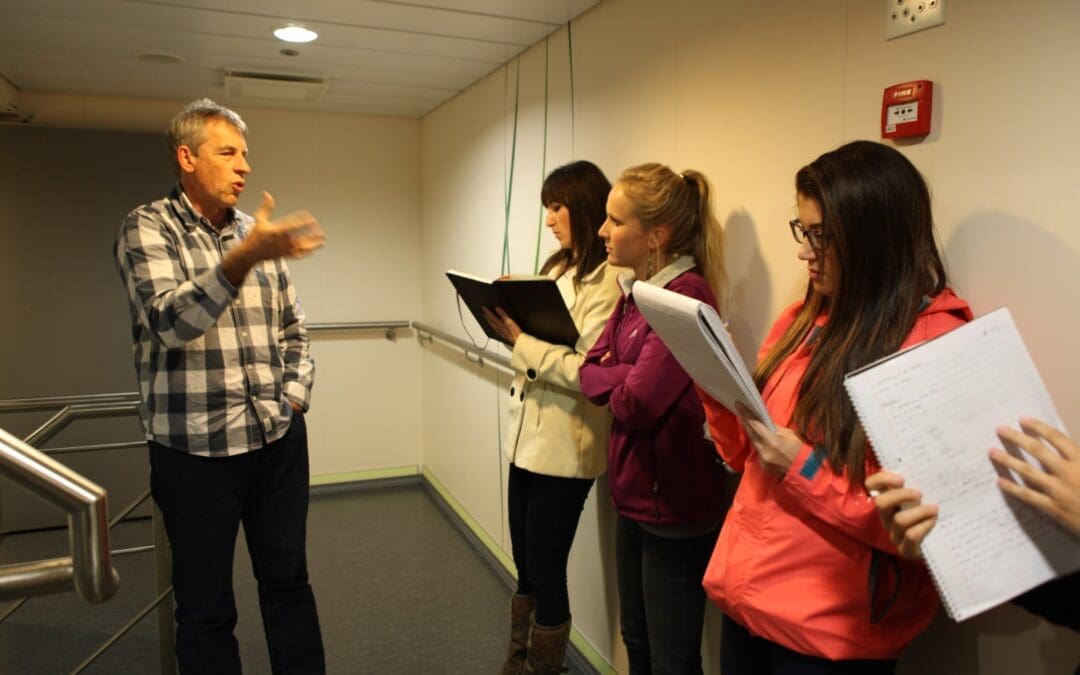
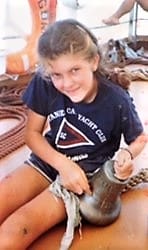
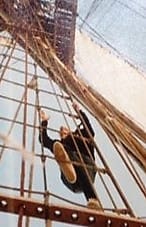
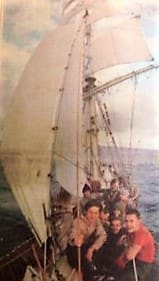
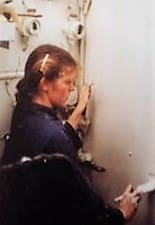 Isabelle as a child always wanted to be an oceanographer. “When I was 13 my father sent me off for 6 months on a Tall Ship to sail around Africa. And so, having grown up on sailing ships and sailing the world at a very young age it seemed only natural to follow in my passion to build a career around the sea.
Isabelle as a child always wanted to be an oceanographer. “When I was 13 my father sent me off for 6 months on a Tall Ship to sail around Africa. And so, having grown up on sailing ships and sailing the world at a very young age it seemed only natural to follow in my passion to build a career around the sea.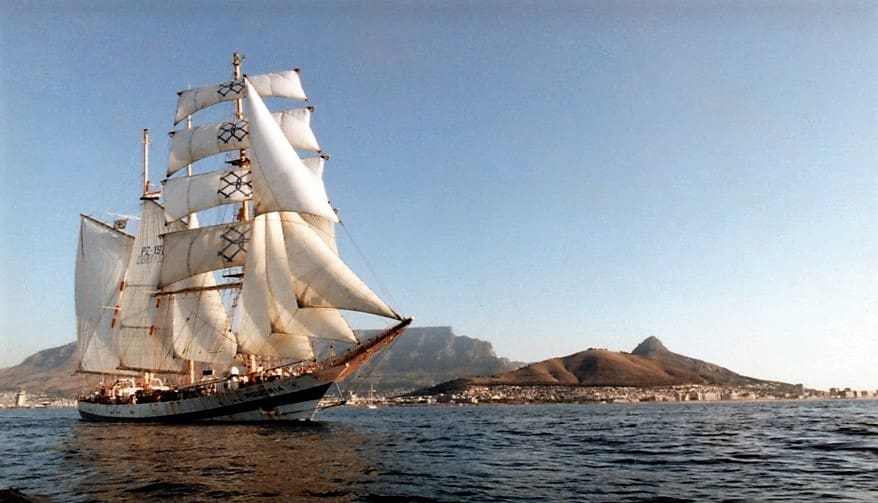
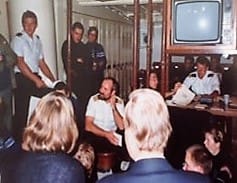
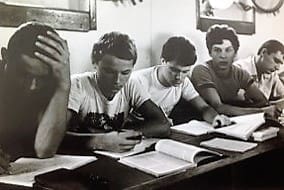 I first studied at Plymouth University in the UK, where I completed a BSc in Ocean Sciences in 1992. I came to South Africa in 1993 and under the mentorship of Professor Lutjeharms in the Oceanography Department at UCT I started to turn this passion into a sea-going academic career.
I first studied at Plymouth University in the UK, where I completed a BSc in Ocean Sciences in 1992. I came to South Africa in 1993 and under the mentorship of Professor Lutjeharms in the Oceanography Department at UCT I started to turn this passion into a sea-going academic career.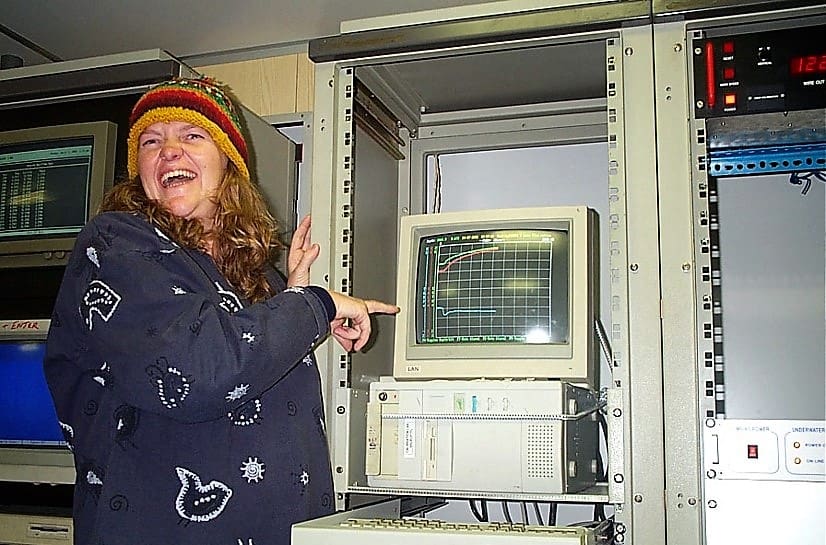
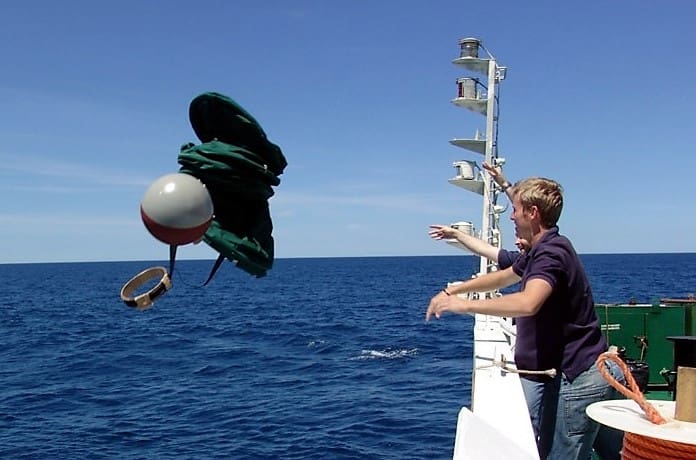
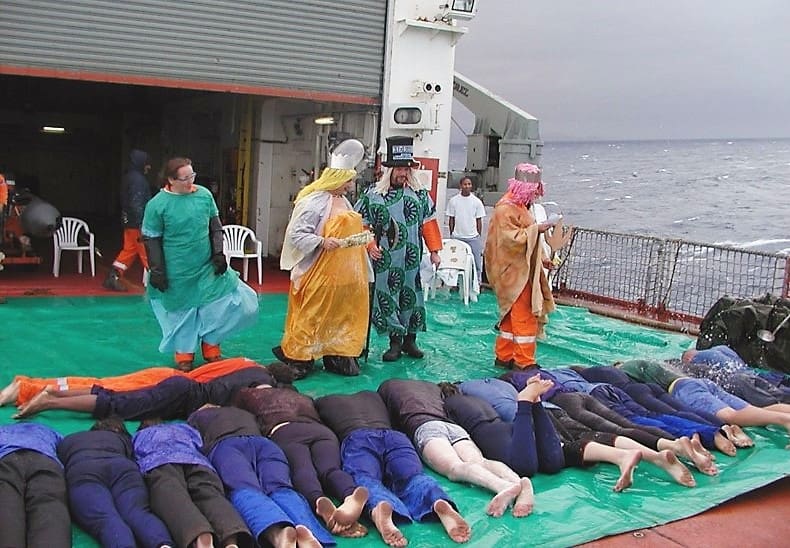 One of my first jobs at UCT was to gain seagoing experience in working with all ship-based equipment. I loved being at sea and felt that after my many experiences on both national and international research vessels that I would be good at teaching practical oceanography. And so began a long period of sea-going adventures between 1996 and 2016 in which UCT Honours students were taken to sea onboard the old SA Agulhas I and from 2012 the new SA Agulhas II. The training was always part of the 5 week Prince Edward Island relief voyage and in those days students had to work the winches, drive the CTD software, work up the data for mini-projects!
One of my first jobs at UCT was to gain seagoing experience in working with all ship-based equipment. I loved being at sea and felt that after my many experiences on both national and international research vessels that I would be good at teaching practical oceanography. And so began a long period of sea-going adventures between 1996 and 2016 in which UCT Honours students were taken to sea onboard the old SA Agulhas I and from 2012 the new SA Agulhas II. The training was always part of the 5 week Prince Edward Island relief voyage and in those days students had to work the winches, drive the CTD software, work up the data for mini-projects!
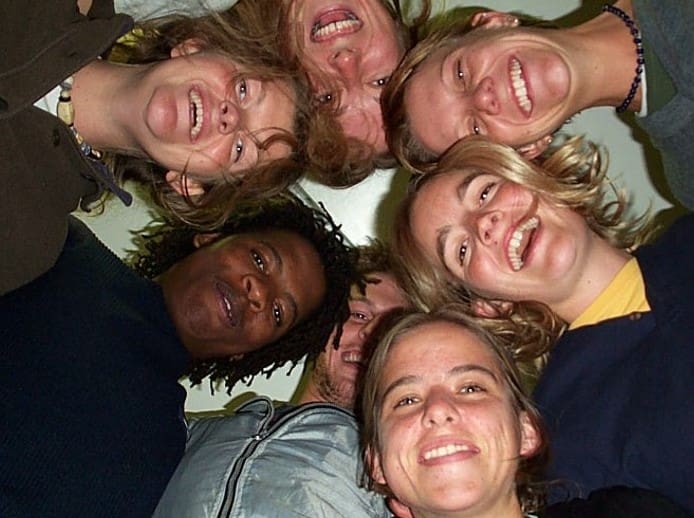 Isabelle’s Working Life: “I was employed as a lecturer at UCT in 2006 and have worked hard to build a career both nationally and internationally in observational oceanography. My passion and love for the sea can be seen in the many opportunities that I create for students both at UCT, and as can be seen from the SEAmester Floating University across the entire country. I was the first female PhD graduate in Oceanography at UCT in 2000, I am the only female Full Professor in the Oceanography Department and the first female Head of Department in 2016. “
Isabelle’s Working Life: “I was employed as a lecturer at UCT in 2006 and have worked hard to build a career both nationally and internationally in observational oceanography. My passion and love for the sea can be seen in the many opportunities that I create for students both at UCT, and as can be seen from the SEAmester Floating University across the entire country. I was the first female PhD graduate in Oceanography at UCT in 2000, I am the only female Full Professor in the Oceanography Department and the first female Head of Department in 2016. “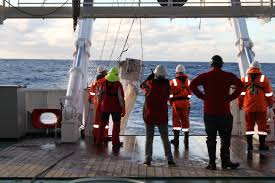
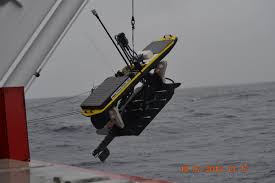
 What drives me:” I love teaching students. Taking a student to sea and watching them learn and seeing their eyes light up when they first board the SA Agulhas II is extremely rewarding. Many of my former students have returned to sea either as senior researchers leading their own cohort of students, or they have built their career in marine management or moved into the academic field. It is so rewarding see young inexperienced students join a cruise and leave imbued with a new confidence and a passion for their discipline.
What drives me:” I love teaching students. Taking a student to sea and watching them learn and seeing their eyes light up when they first board the SA Agulhas II is extremely rewarding. Many of my former students have returned to sea either as senior researchers leading their own cohort of students, or they have built their career in marine management or moved into the academic field. It is so rewarding see young inexperienced students join a cruise and leave imbued with a new confidence and a passion for their discipline.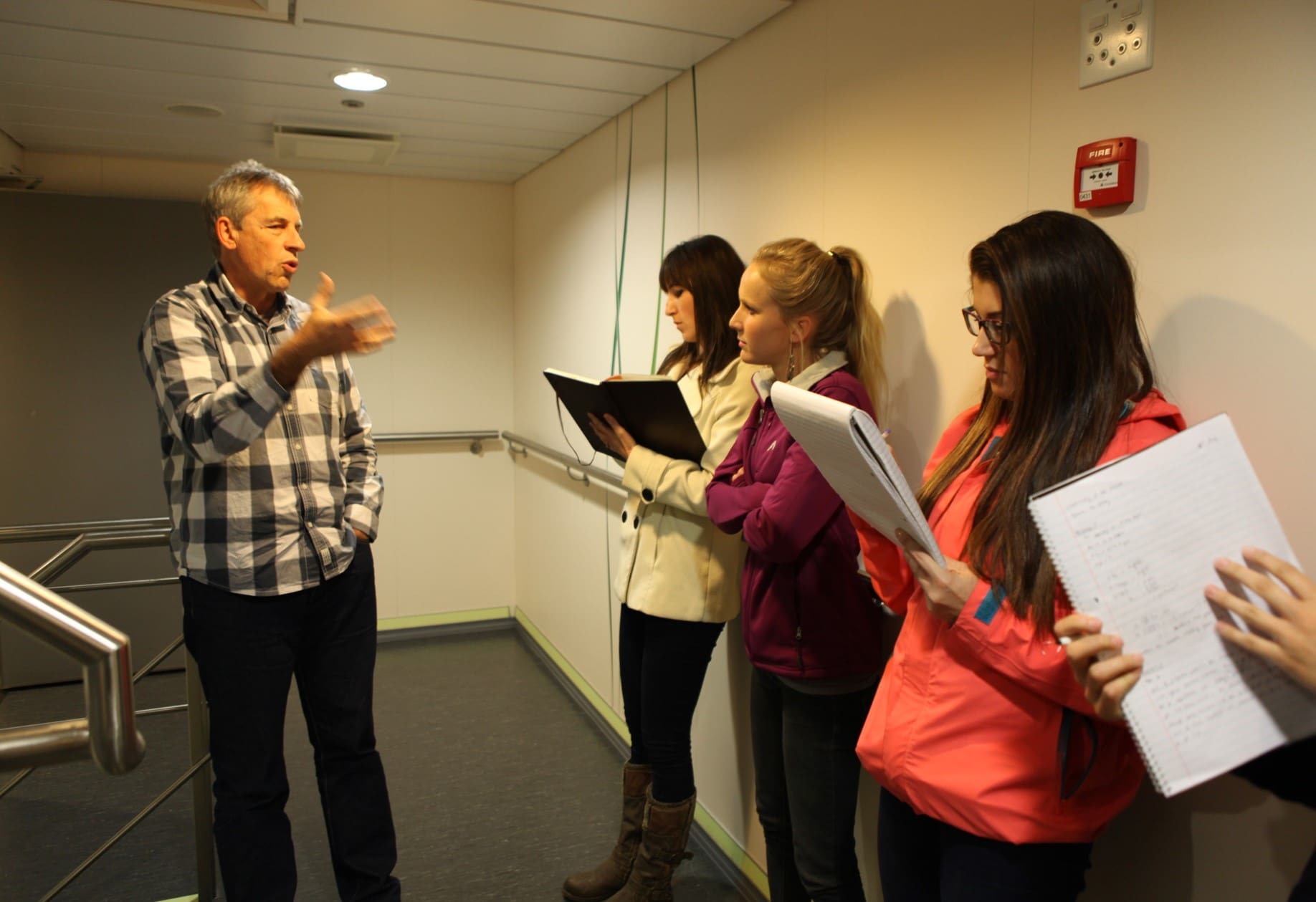 “I am proud of the SEAmester programme and how we have been able to develop linkages with traditionally non marine universities both through their students joining as SEAmester students or their own Lecturers joining the academic programme. The state-of-the-art research vessel, SA Agulhas II, provides such an incredible teaching and research platform for this programme; its size, comfort and shipboard facilities allow groups of 46 students and 30 lecturers to productively interact over a period of 10 days as can the photo of Prof Gammon teaching students in the ship’s stairwell shows so well!.”
“I am proud of the SEAmester programme and how we have been able to develop linkages with traditionally non marine universities both through their students joining as SEAmester students or their own Lecturers joining the academic programme. The state-of-the-art research vessel, SA Agulhas II, provides such an incredible teaching and research platform for this programme; its size, comfort and shipboard facilities allow groups of 46 students and 30 lecturers to productively interact over a period of 10 days as can the photo of Prof Gammon teaching students in the ship’s stairwell shows so well!.” My advice to the young generation: “Four words – always take the initiative! In the UK the only sea-going opportunity I had was to work on the River Tamar outside of Plymouth! In South Africa our students go to Antarctica! But it takes you to make that difference. We have so many wonderful opportunities in South Africa and access to such incredible marine programmes and platforms but the sparkplug to get started must come from you. All academics get frustrated by students not willing to engage with their surroundings and
My advice to the young generation: “Four words – always take the initiative! In the UK the only sea-going opportunity I had was to work on the River Tamar outside of Plymouth! In South Africa our students go to Antarctica! But it takes you to make that difference. We have so many wonderful opportunities in South Africa and access to such incredible marine programmes and platforms but the sparkplug to get started must come from you. All academics get frustrated by students not willing to engage with their surroundings and 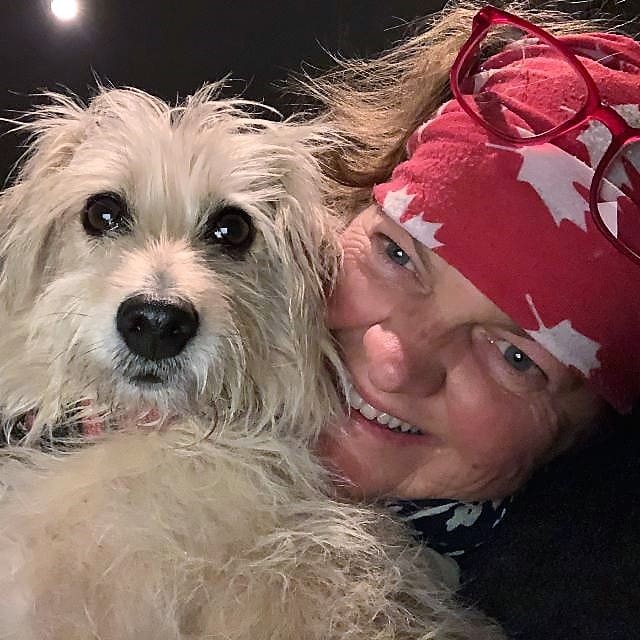 not even realise the enormous privilege it is to be on a research vessel such as the SA Agulhas II. You don’t have to be the brightest student in the class but by staying engaged, enthusiastic, interactive and dedicated to your studies you will always go much further in life. Opportunities are endless but it takes you to grab it!”
not even realise the enormous privilege it is to be on a research vessel such as the SA Agulhas II. You don’t have to be the brightest student in the class but by staying engaged, enthusiastic, interactive and dedicated to your studies you will always go much further in life. Opportunities are endless but it takes you to grab it!”
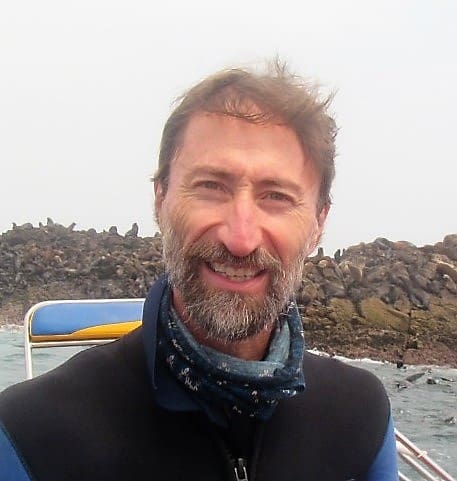
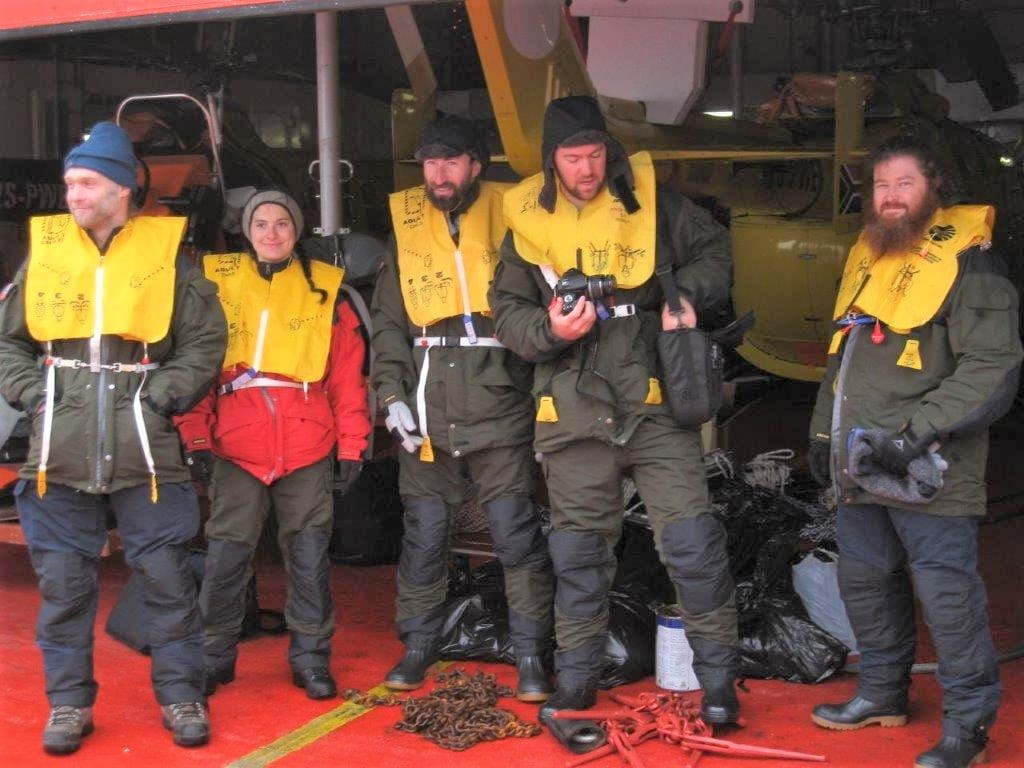
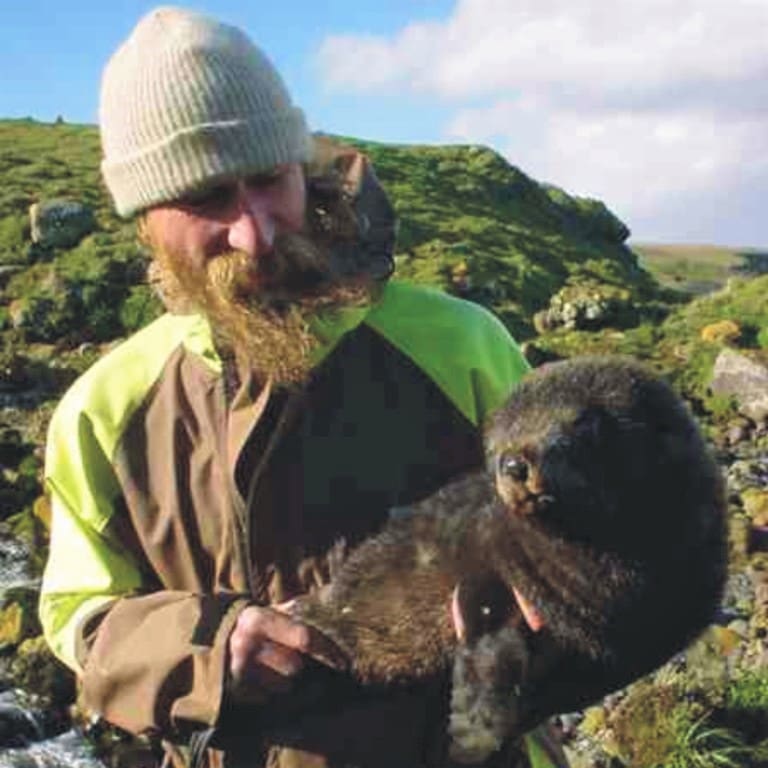
 Above (l-r) : Greg(middle) to leave for Bouvet; Greg on Marion Island; Greg on Bouvet Island
Above (l-r) : Greg(middle) to leave for Bouvet; Greg on Marion Island; Greg on Bouvet Island 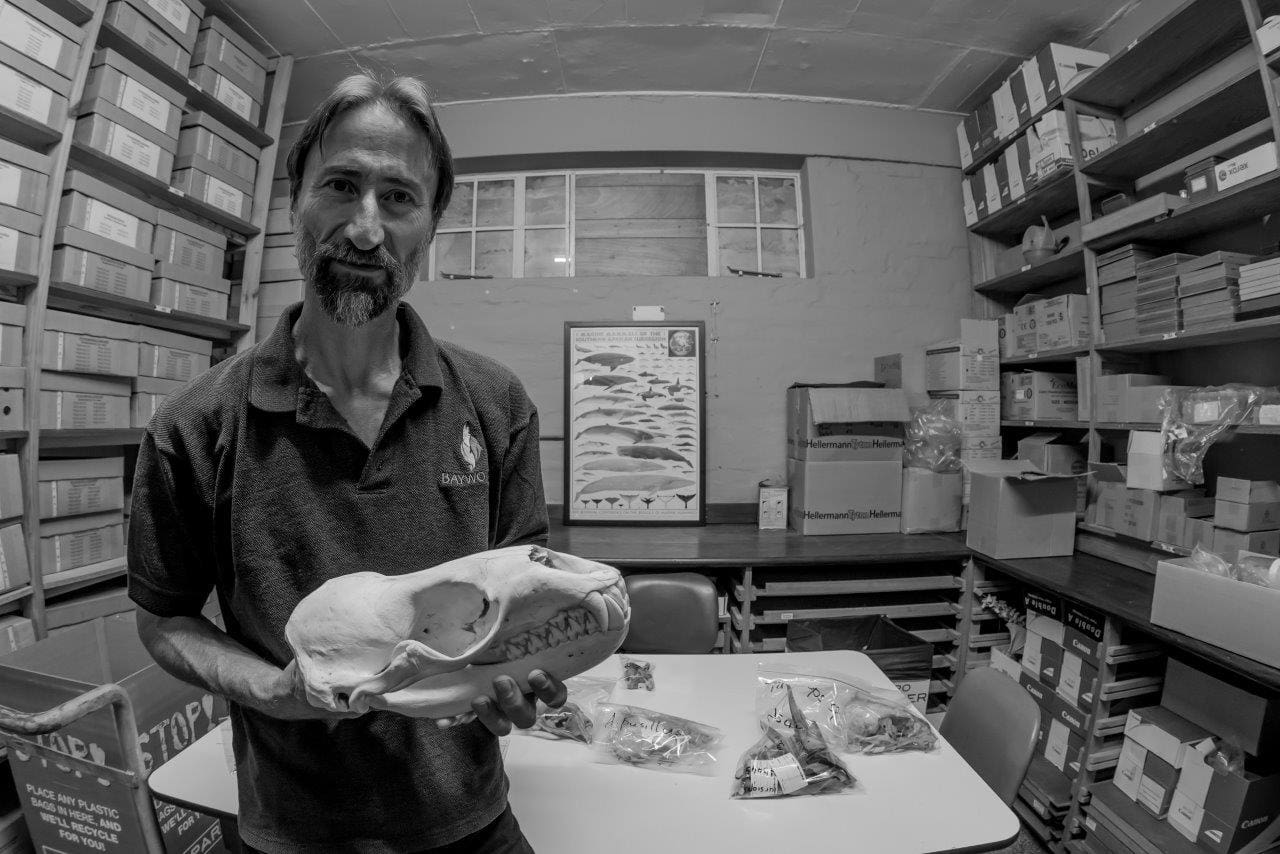 I took up my current employment in 2006 as marine mammal biologist at the
I took up my current employment in 2006 as marine mammal biologist at the 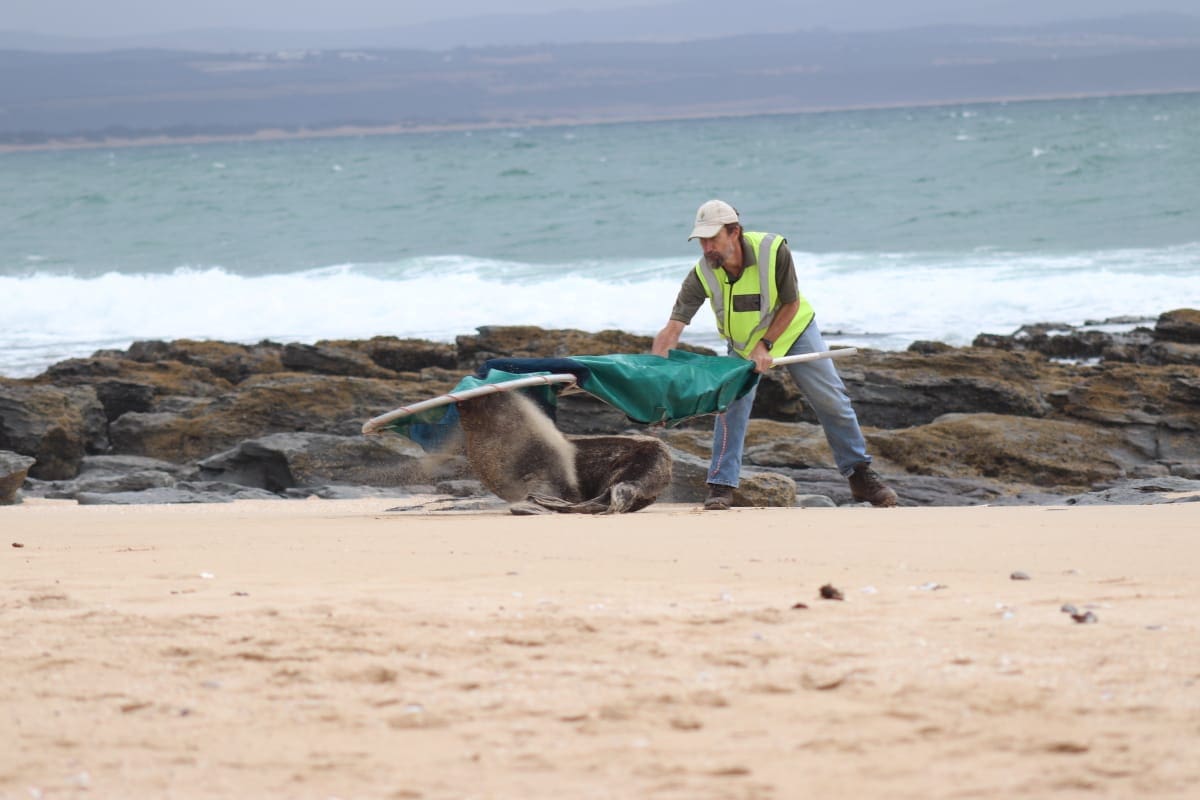
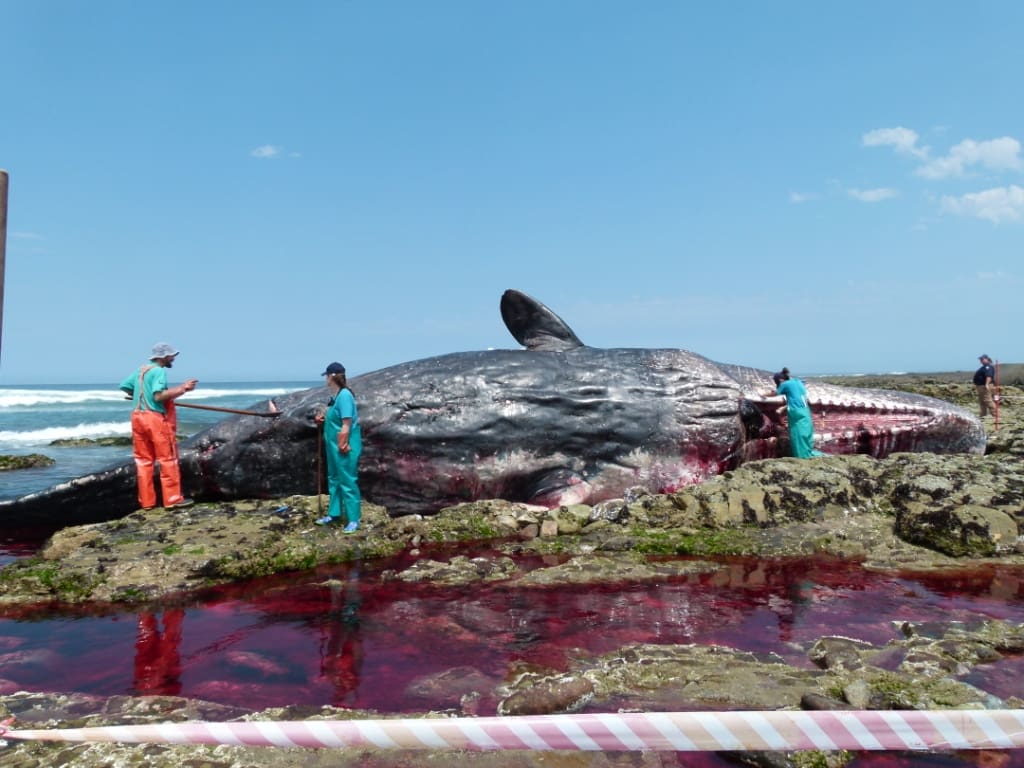
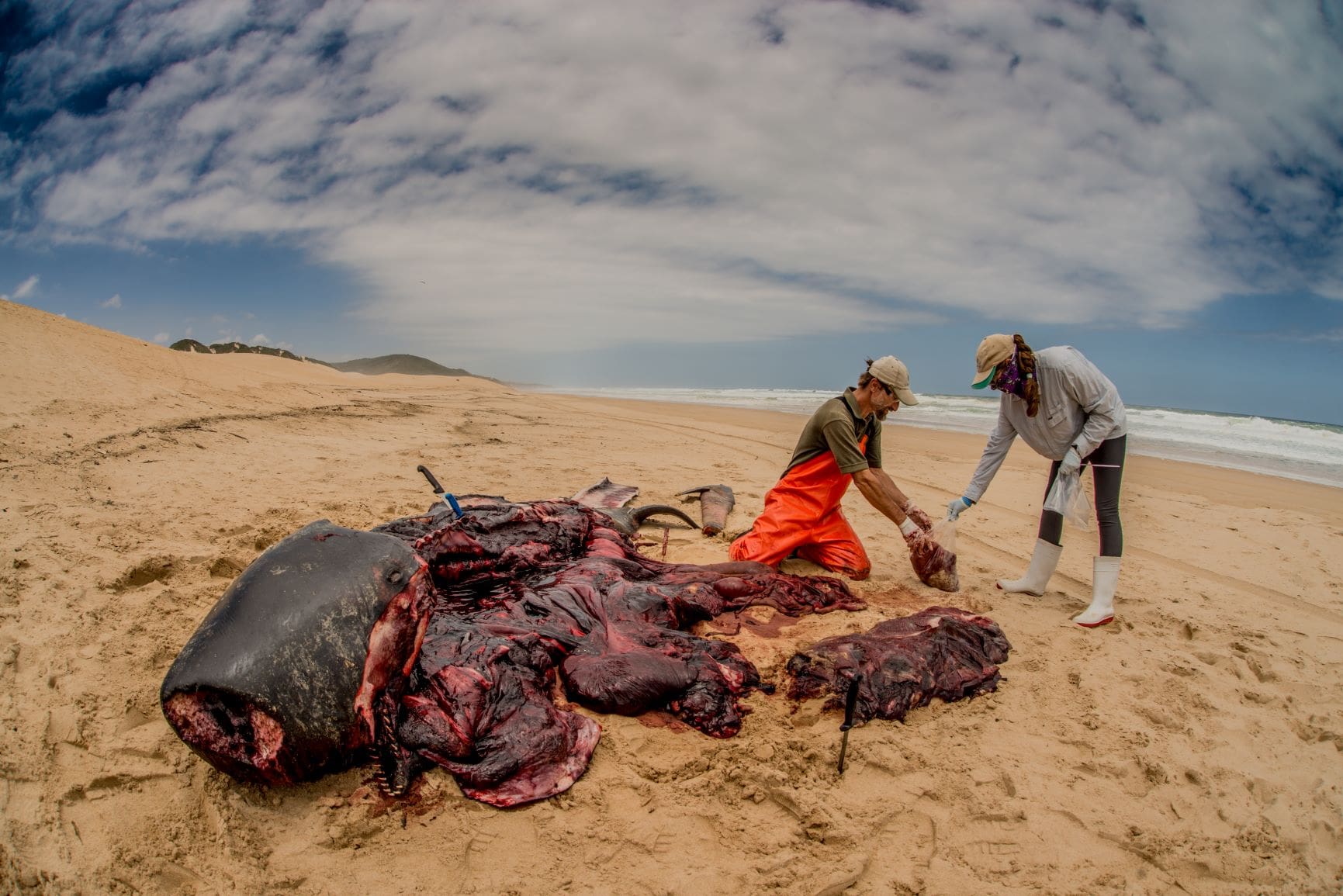 When I was very young I was keen to become a game ranger. While in high school this had morphed into being a zoologist. And this is the career that I was lucky enough to follow. It has given me wonderful opportunities and allowed me to do some fascinating things. I had always wanted to work in wild places and so arriving on Marion Island for the first time was like arriving in paradise. Before the end of my first year, I new that I had to return. I loved every moment on this rough place. Not only was it beautiful and challenging, but it also allowed one the opportunity to observe animals fairly closely and wonder about their way of life and behaviour. How did these very distant relatives of our survive in an environment so hostile to us? Thus it was also intellectually stimulating. And I have loved to return to wild places and ask questions about the natural work ever since.
When I was very young I was keen to become a game ranger. While in high school this had morphed into being a zoologist. And this is the career that I was lucky enough to follow. It has given me wonderful opportunities and allowed me to do some fascinating things. I had always wanted to work in wild places and so arriving on Marion Island for the first time was like arriving in paradise. Before the end of my first year, I new that I had to return. I loved every moment on this rough place. Not only was it beautiful and challenging, but it also allowed one the opportunity to observe animals fairly closely and wonder about their way of life and behaviour. How did these very distant relatives of our survive in an environment so hostile to us? Thus it was also intellectually stimulating. And I have loved to return to wild places and ask questions about the natural work ever since.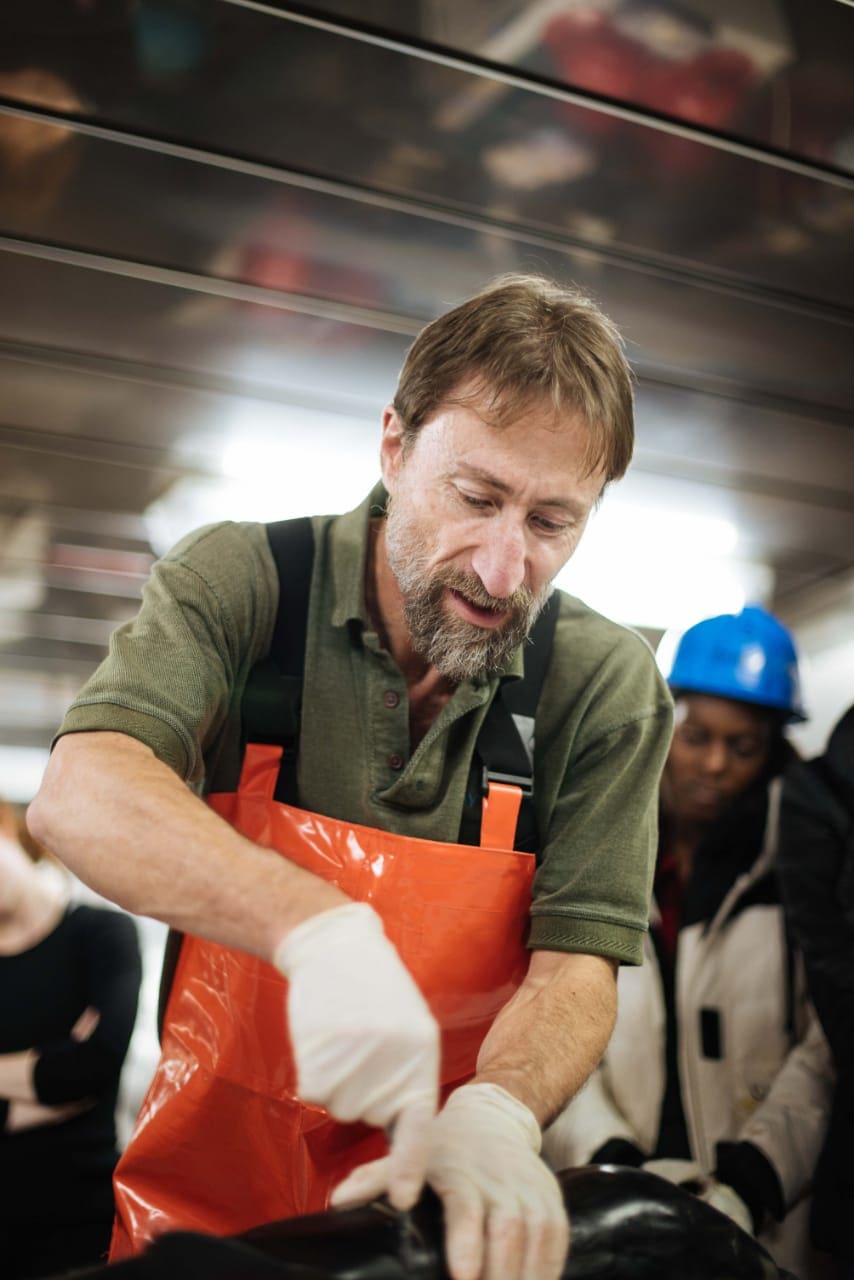
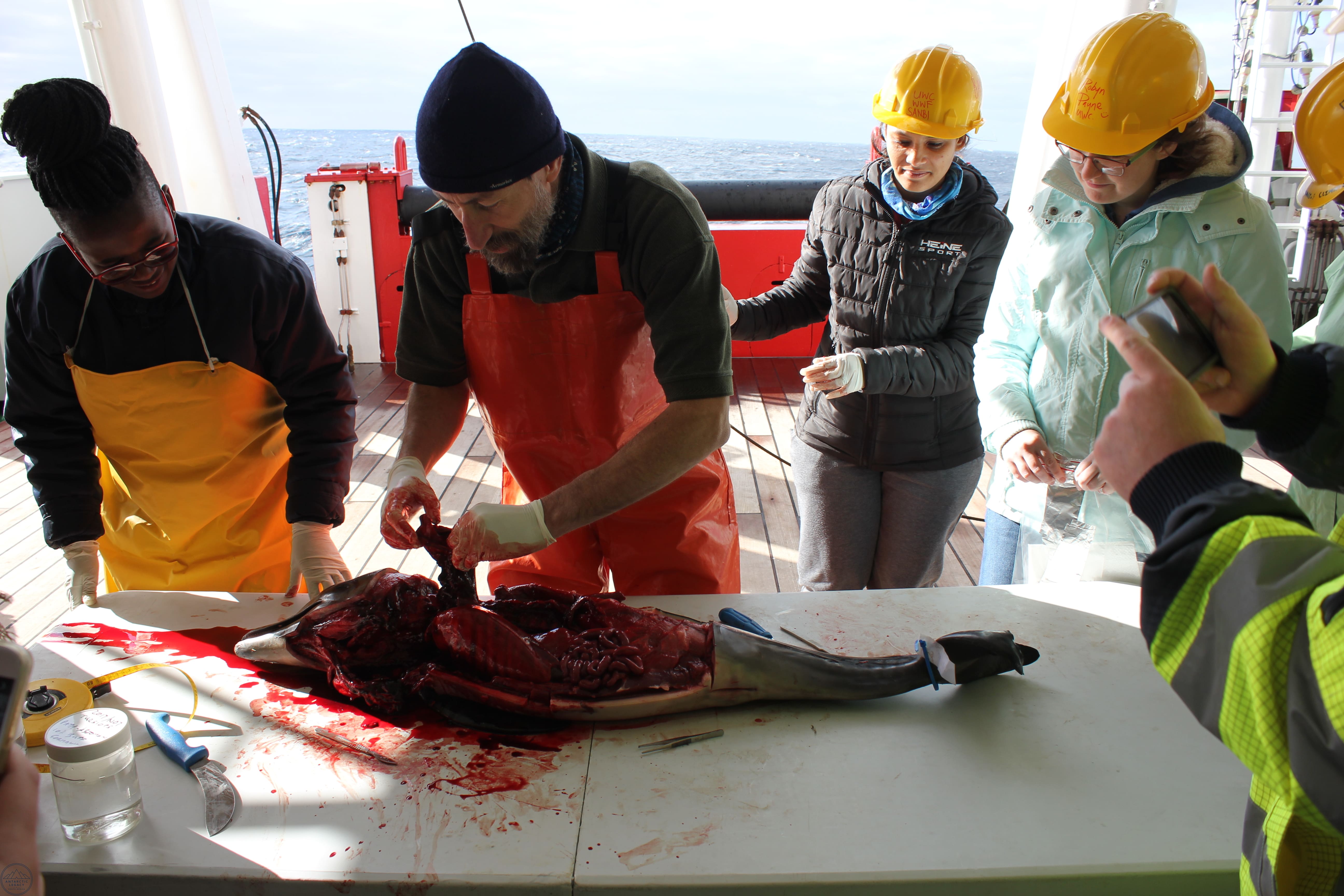 If you want to become a scientist, do what you love. It is a tough career that requires
If you want to become a scientist, do what you love. It is a tough career that requires
 The SANAP symposiums is: “..the perfect platform for diverse disciplines to “cross-fertilise” ideas often leading to collaborations. It is an exciting community; the people are so different, but the focus is on the same problems in the same place.” – Rosemary Dorrington
The SANAP symposiums is: “..the perfect platform for diverse disciplines to “cross-fertilise” ideas often leading to collaborations. It is an exciting community; the people are so different, but the focus is on the same problems in the same place.” – Rosemary Dorrington The 6th
The 6th  The 1st SANAP symposium took place in Stellenbosch in October 2007 over a period of 2 days hosted by Steven Chown of the Stellenbosch University and in 2009 the Symposium was held in Cape Town, on 8-10 February 2009.
The 1st SANAP symposium took place in Stellenbosch in October 2007 over a period of 2 days hosted by Steven Chown of the Stellenbosch University and in 2009 the Symposium was held in Cape Town, on 8-10 February 2009.
 In Grahamstown in 2014 the 3rd Symposium was hosted by Ian Meiklejohn and Rosemary Dorrington of Rhodes University. Rosemary in an
In Grahamstown in 2014 the 3rd Symposium was hosted by Ian Meiklejohn and Rosemary Dorrington of Rhodes University. Rosemary in an  In 2016 the
In 2016 the 
 The last and 5th SANAP symposium was held in Hermanus organized by Michael Kosch of SANSA and Kenneth Findlay of CPUT.
The last and 5th SANAP symposium was held in Hermanus organized by Michael Kosch of SANSA and Kenneth Findlay of CPUT.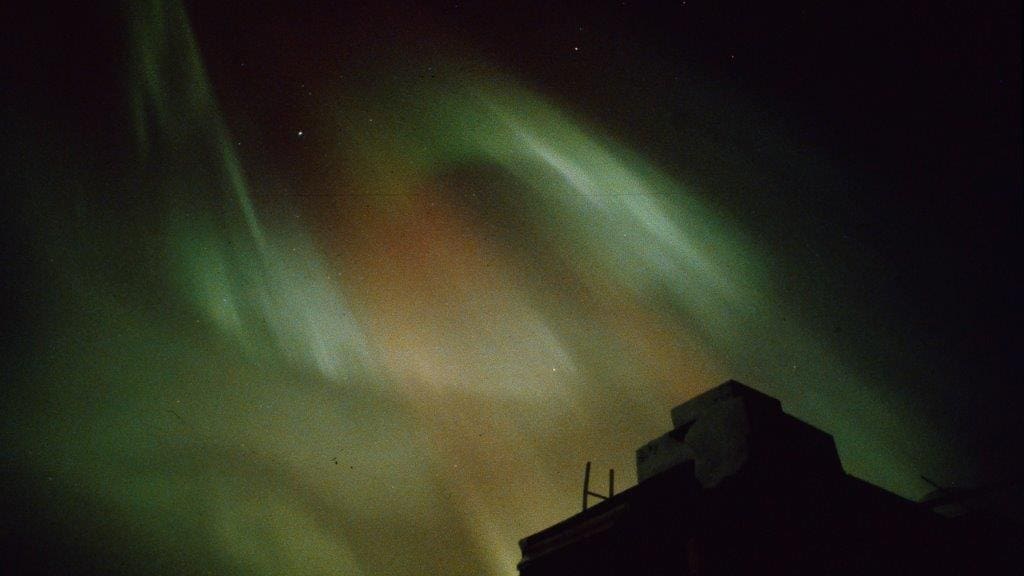
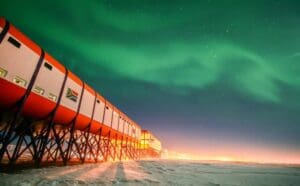
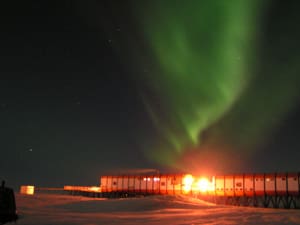 “Auroras provide direct visual evidence that the atmosphere is shielding life on Earth from the radiation hazards of space.” –
“Auroras provide direct visual evidence that the atmosphere is shielding life on Earth from the radiation hazards of space.” – 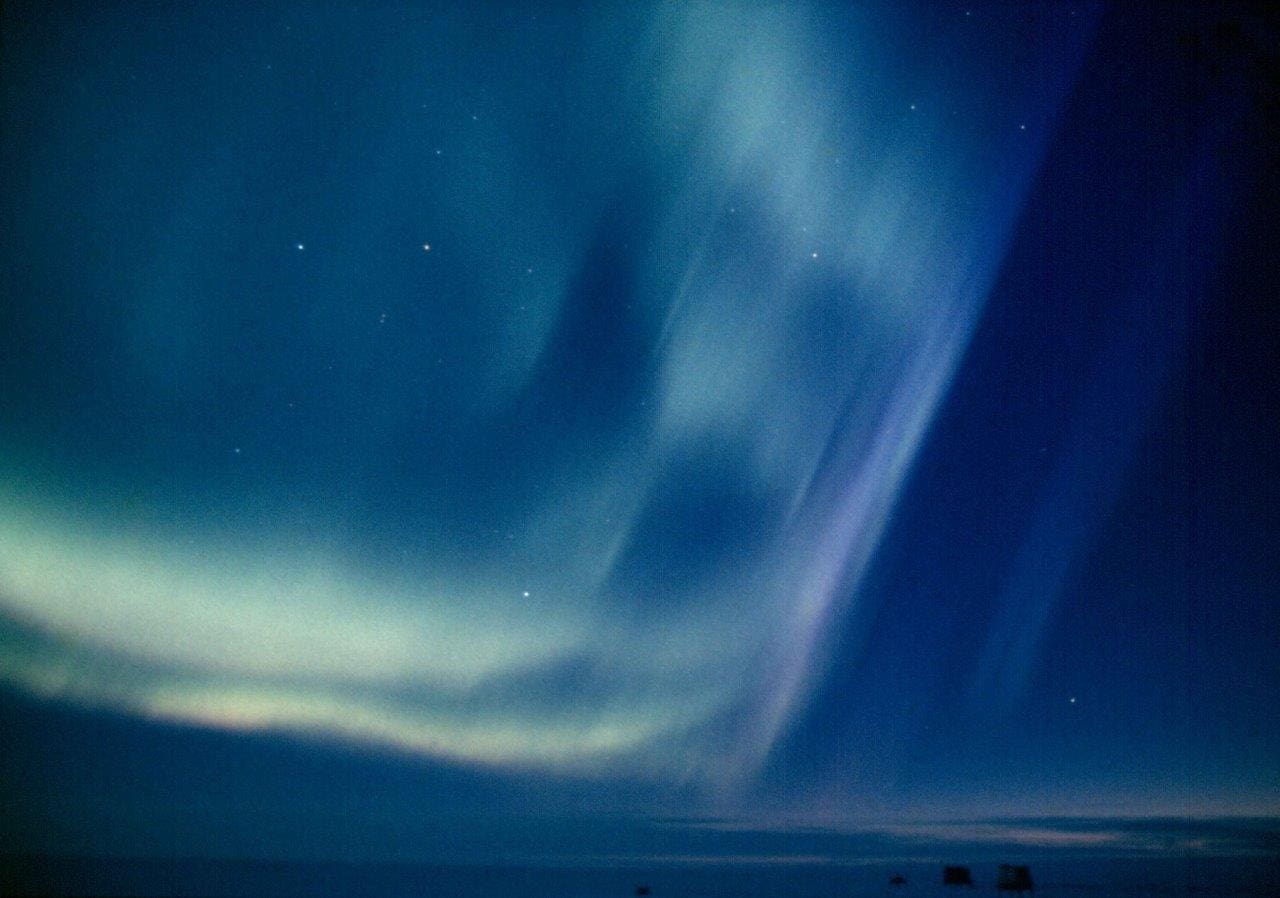
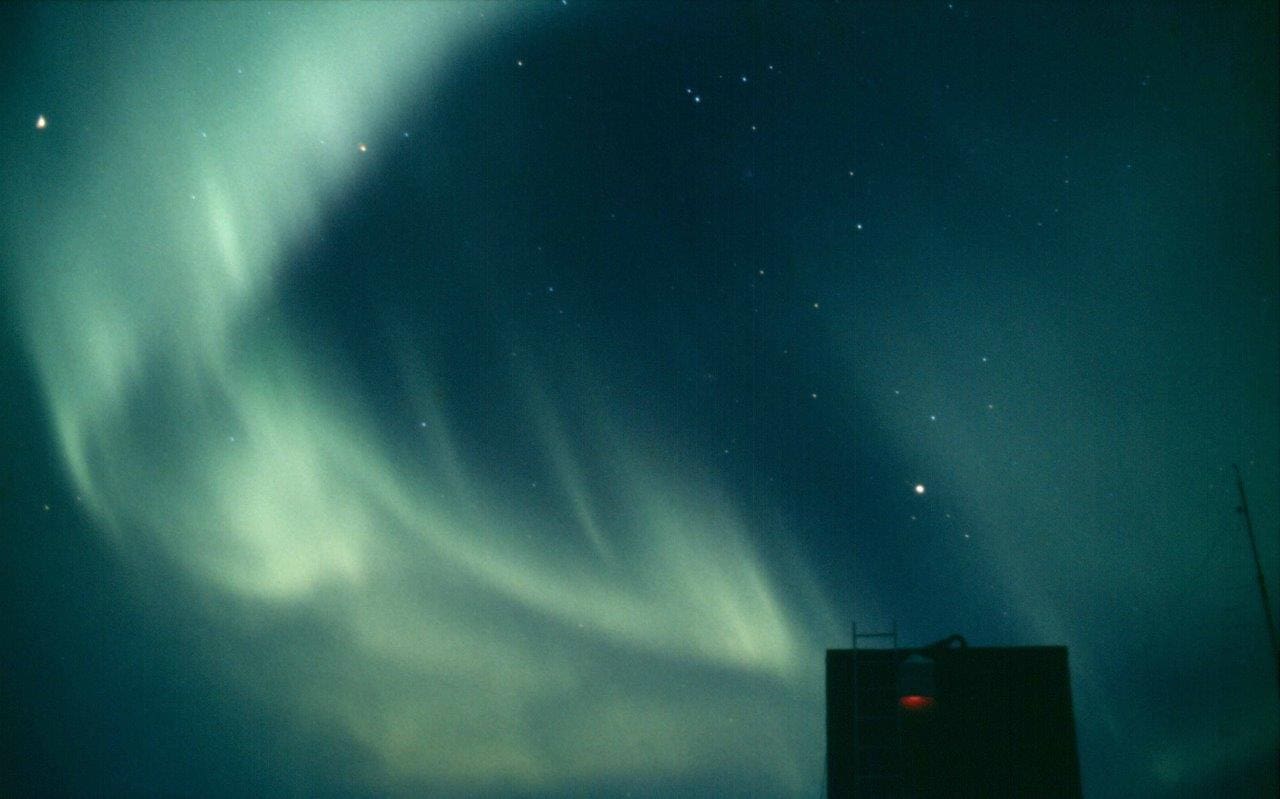 About 10% of the solar wind becomes trapped on the Earth’s magnetic field lines in a process called magnetic reconnection, the rest is rejected and flows past the planet into deep space. The trapped particles accumulate, but this cannot go on forever. They are eventually released into the upper-atmosphere in a process called substorms, exciting the atomic oxygen and molecular nitrogen to produce the familiar green and red colours from oxygen, and sometimes the blue colour as well from nitrogen. Charged particles, such as electrons and protons, are constrained to follow the magnetic field lines, and since the Earth’s magnetic field is similar to a dipole bar magnetic, it is only in polar regions where the magnetic field lines reach down to the ground, which is why the auroras appear mostly in polar regions.
About 10% of the solar wind becomes trapped on the Earth’s magnetic field lines in a process called magnetic reconnection, the rest is rejected and flows past the planet into deep space. The trapped particles accumulate, but this cannot go on forever. They are eventually released into the upper-atmosphere in a process called substorms, exciting the atomic oxygen and molecular nitrogen to produce the familiar green and red colours from oxygen, and sometimes the blue colour as well from nitrogen. Charged particles, such as electrons and protons, are constrained to follow the magnetic field lines, and since the Earth’s magnetic field is similar to a dipole bar magnetic, it is only in polar regions where the magnetic field lines reach down to the ground, which is why the auroras appear mostly in polar regions.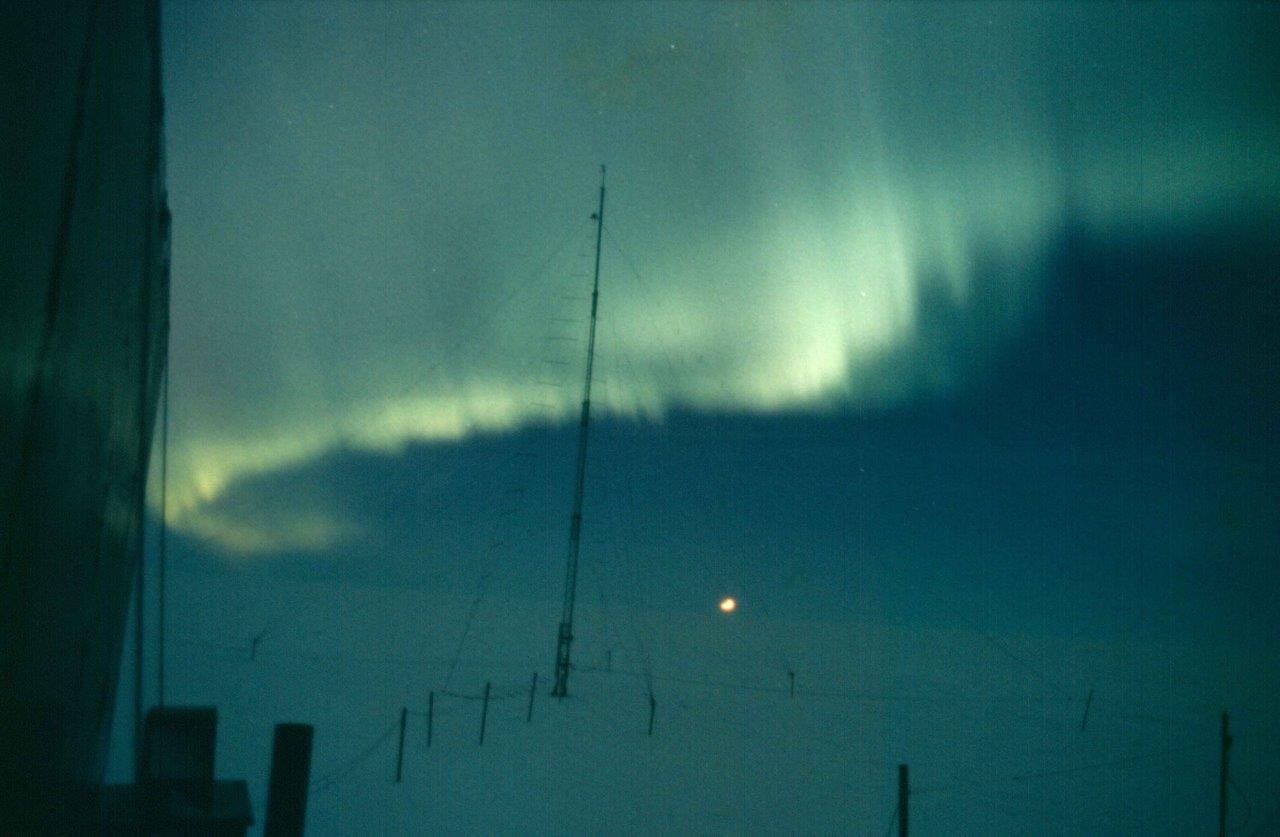

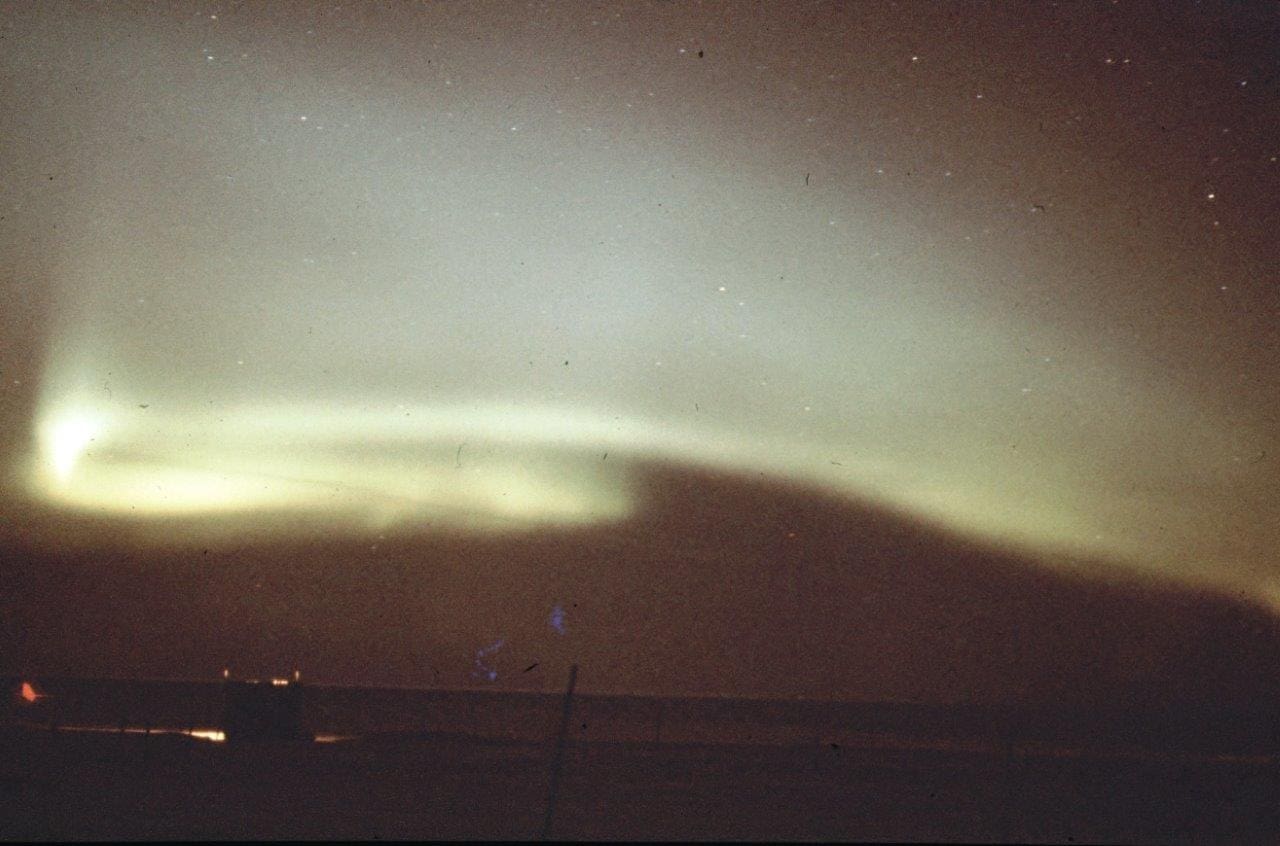 Auroras appear in the height range 100 to 300 km above the Earth’s surface, typically with red, green and blue appearing near the top, middle and bottom, respectively, of this height range. The height of the auroras, and therefore their colour, depends on the energy of the particles, with higher energy able to penetrate to lower altitudes. Auroras are rarely seen at lower latitudes such as South Africa except during major geomagnetic storms, an example of which occurred in 1989 when auroras were visible from Durban.
Auroras appear in the height range 100 to 300 km above the Earth’s surface, typically with red, green and blue appearing near the top, middle and bottom, respectively, of this height range. The height of the auroras, and therefore their colour, depends on the energy of the particles, with higher energy able to penetrate to lower altitudes. Auroras are rarely seen at lower latitudes such as South Africa except during major geomagnetic storms, an example of which occurred in 1989 when auroras were visible from Durban. The following are a few articles in the South African Journal on Antarctic Research available on the Antarctic Legacy of South Africa (ALSA) digital repository
The following are a few articles in the South African Journal on Antarctic Research available on the Antarctic Legacy of South Africa (ALSA) digital repository
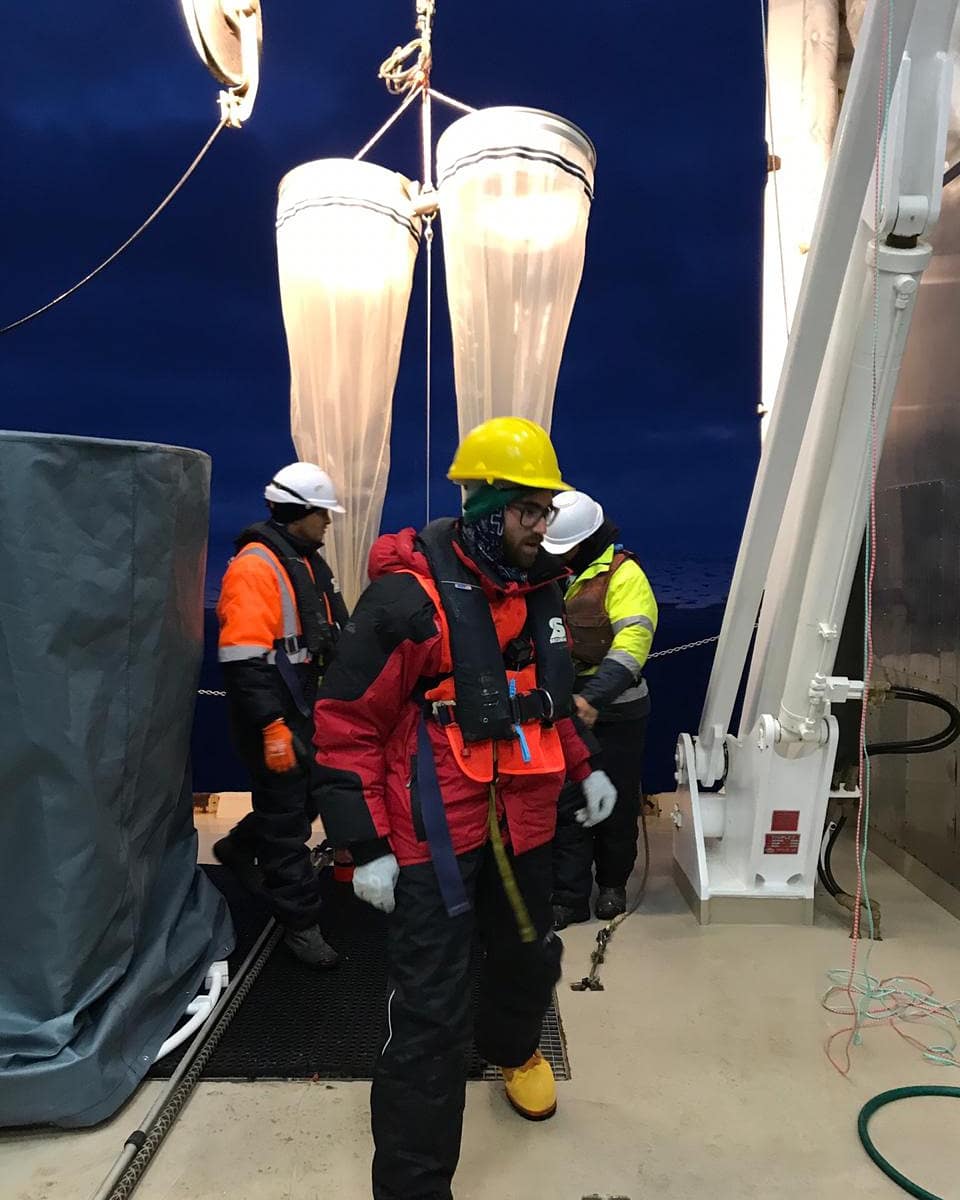
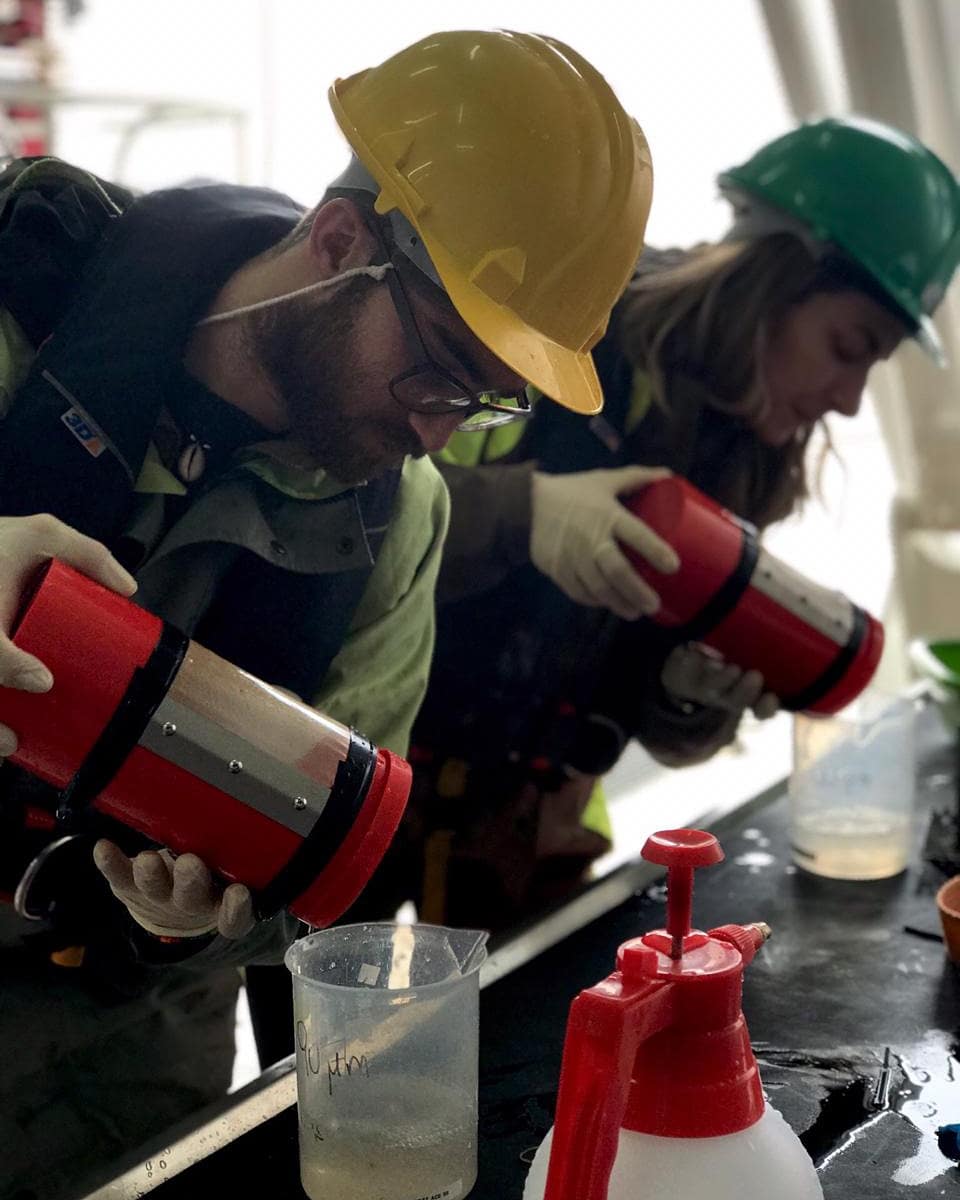
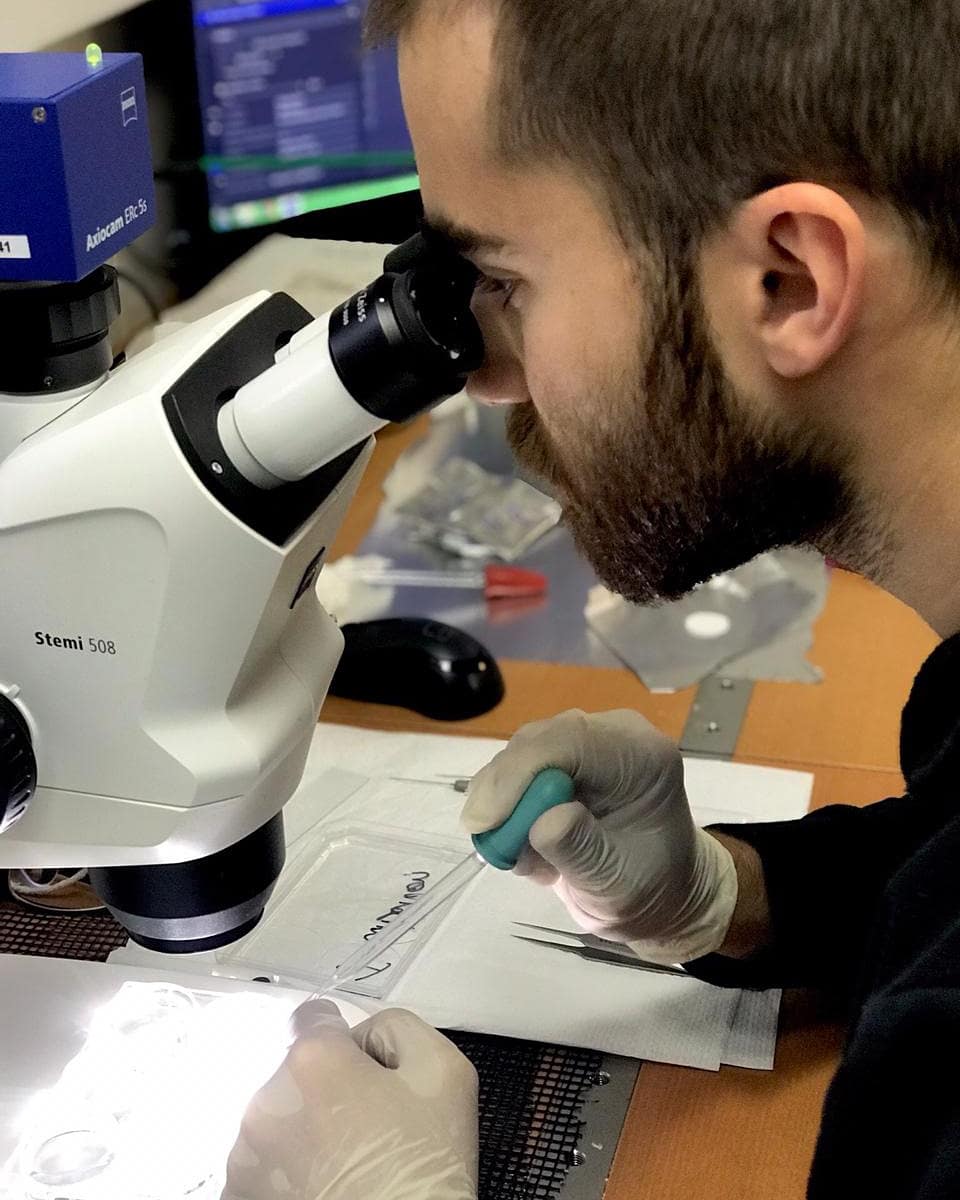
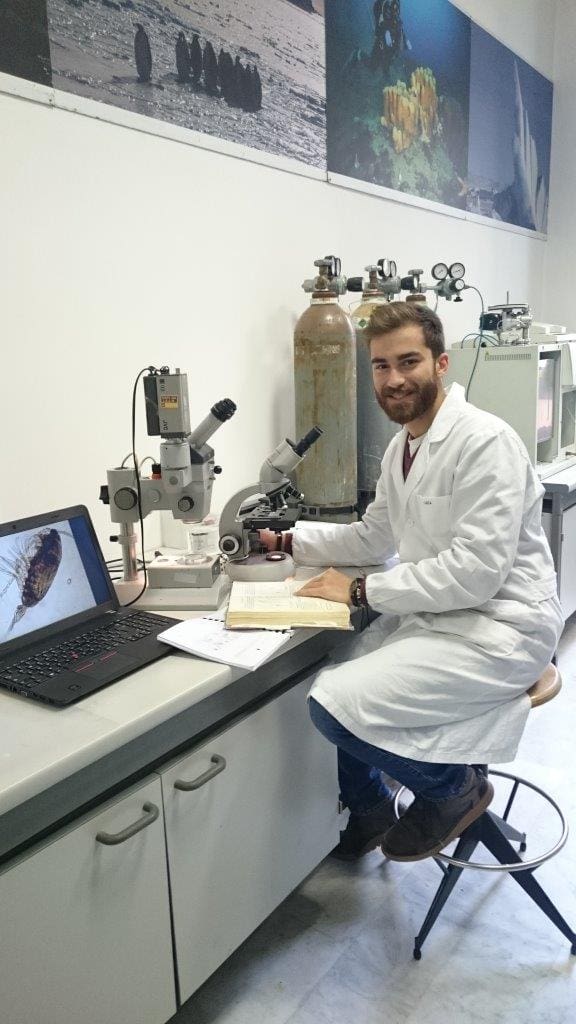 From 2017, he is a PhD student at the
From 2017, he is a PhD student at the 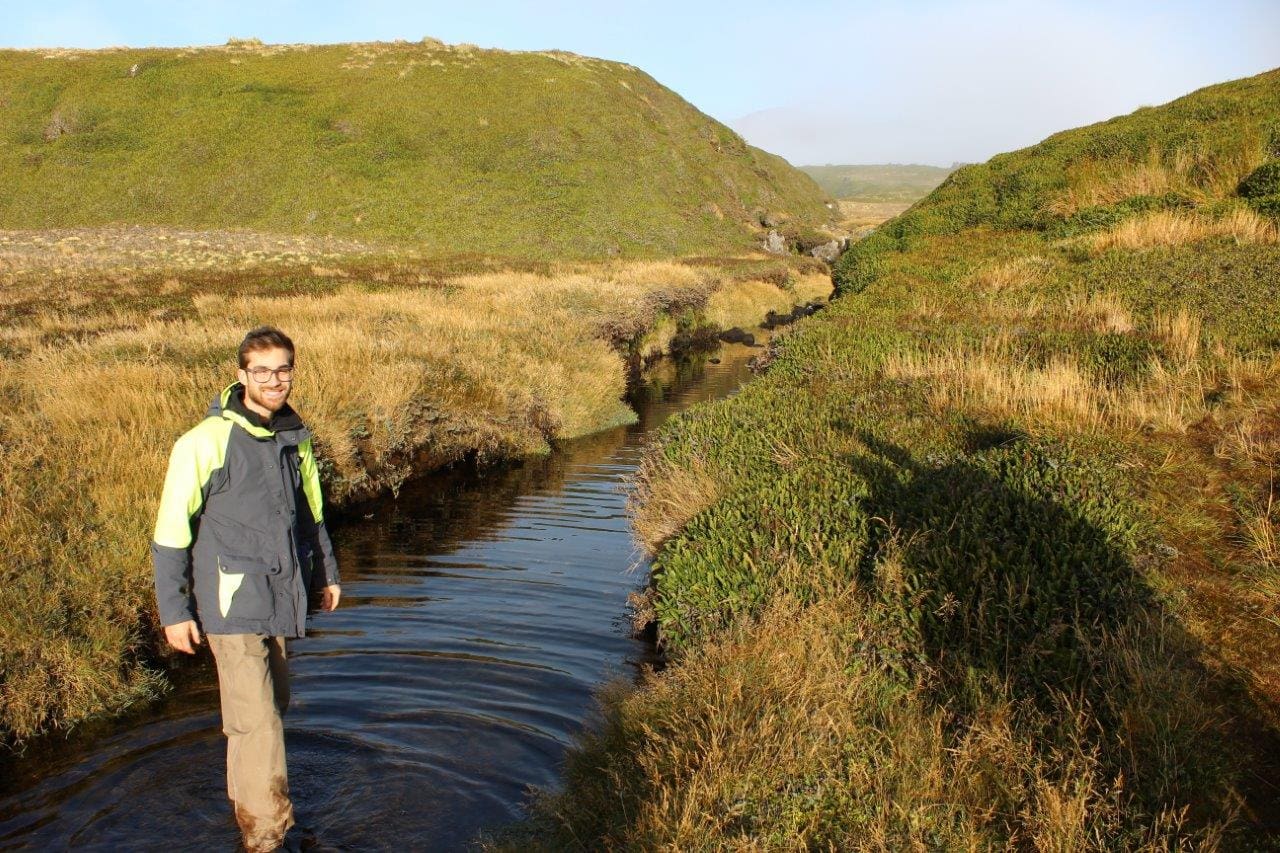
 Earth science, in general, has always been fascinating to me and since I was little, my desire was to discover and learn new things related to our oceans.
Earth science, in general, has always been fascinating to me and since I was little, my desire was to discover and learn new things related to our oceans.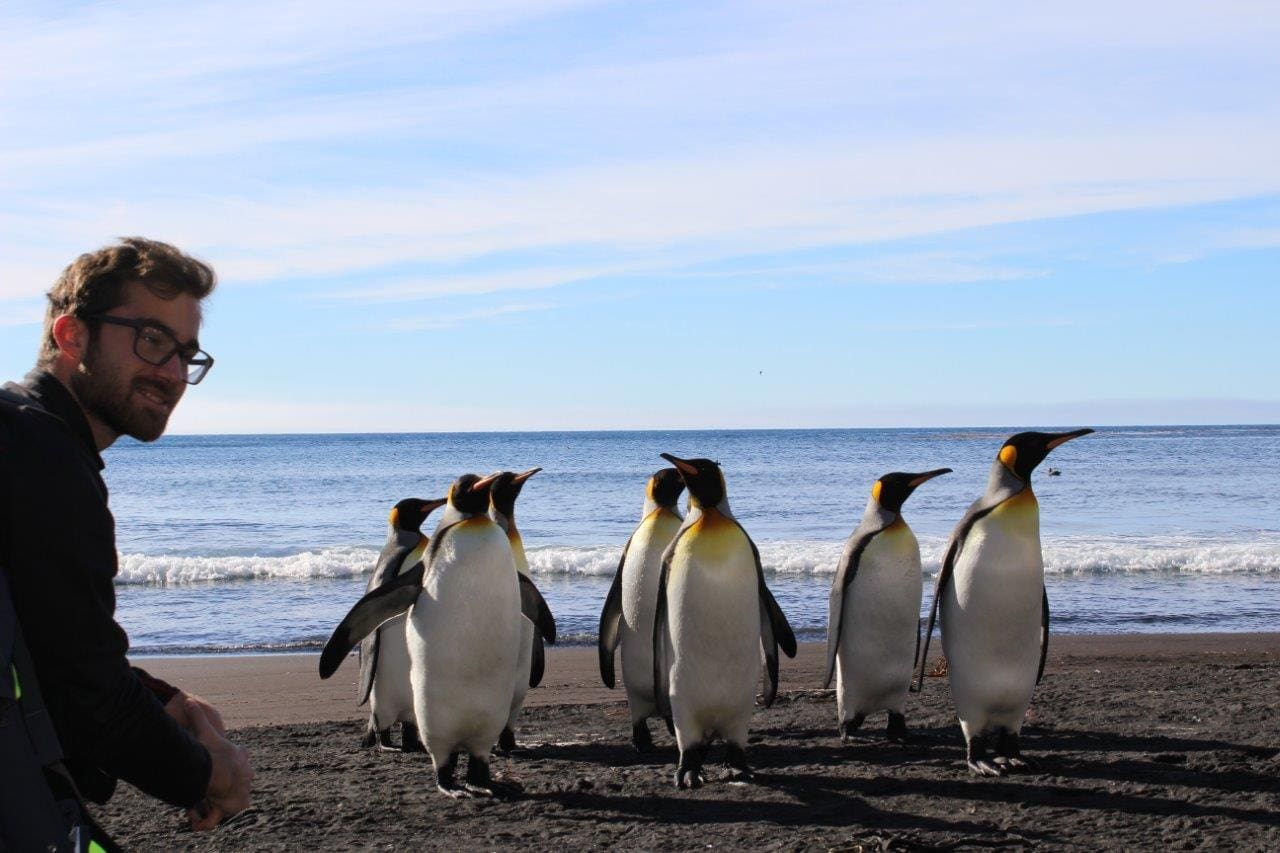
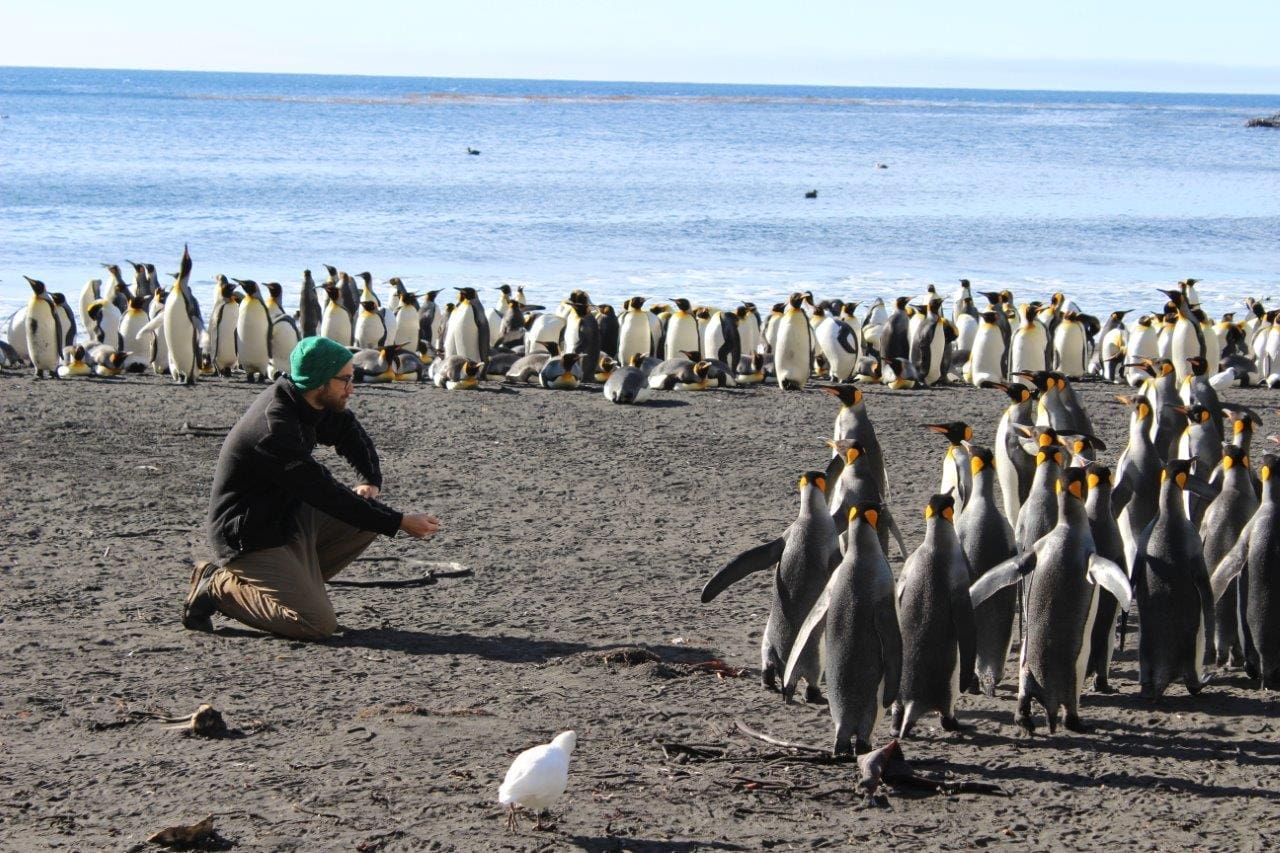
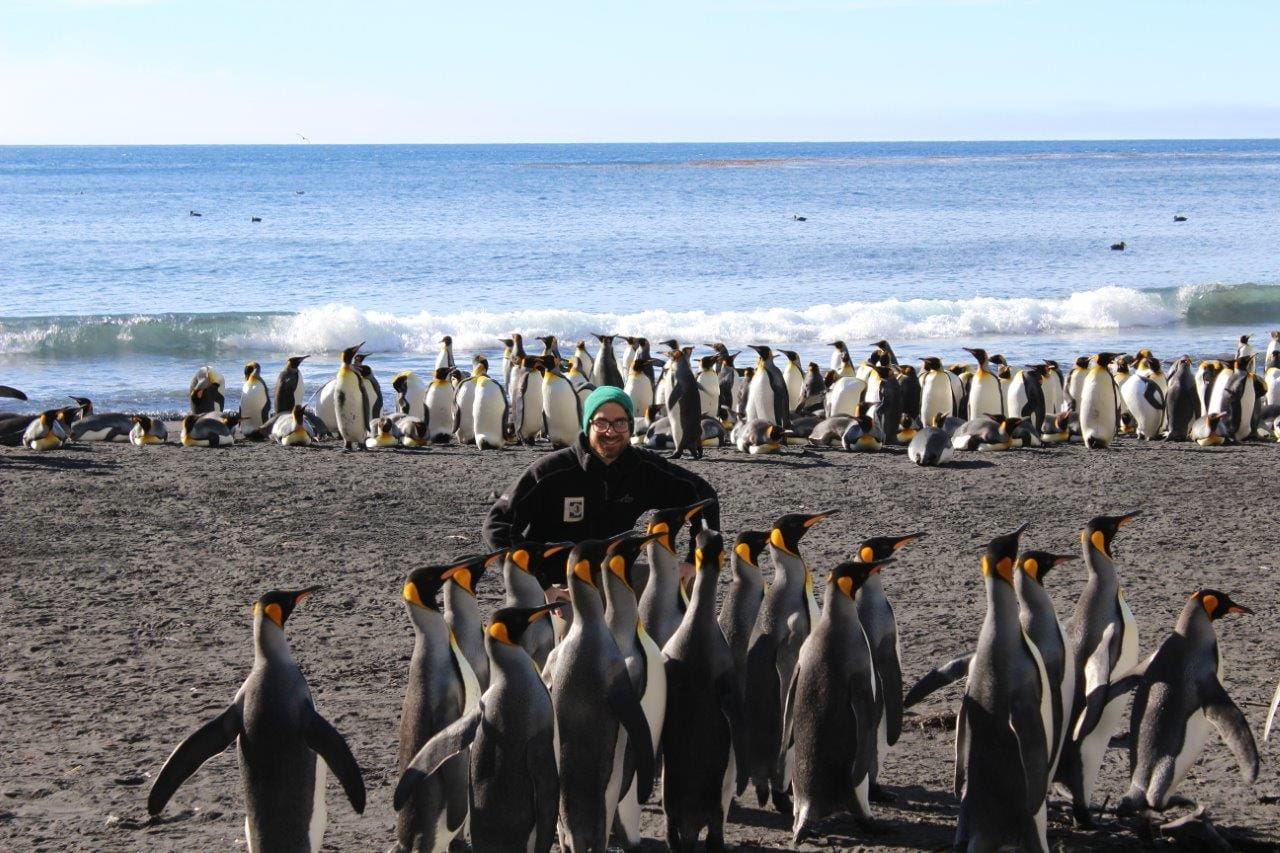 Thanks to oceanography, I can attend fantastic expeditions anywhere in the world, exploring from the icy polar seas to the warmer waters of the equator, spending weeks or even months on board of research vessels. During these trips, I always meet colleagues and extraordinary scientists that share the same interests and passions of mine, even if they are from different fields. Furthermore, coming to South Africa, I joined two great scientific communities: one is the
Thanks to oceanography, I can attend fantastic expeditions anywhere in the world, exploring from the icy polar seas to the warmer waters of the equator, spending weeks or even months on board of research vessels. During these trips, I always meet colleagues and extraordinary scientists that share the same interests and passions of mine, even if they are from different fields. Furthermore, coming to South Africa, I joined two great scientific communities: one is the 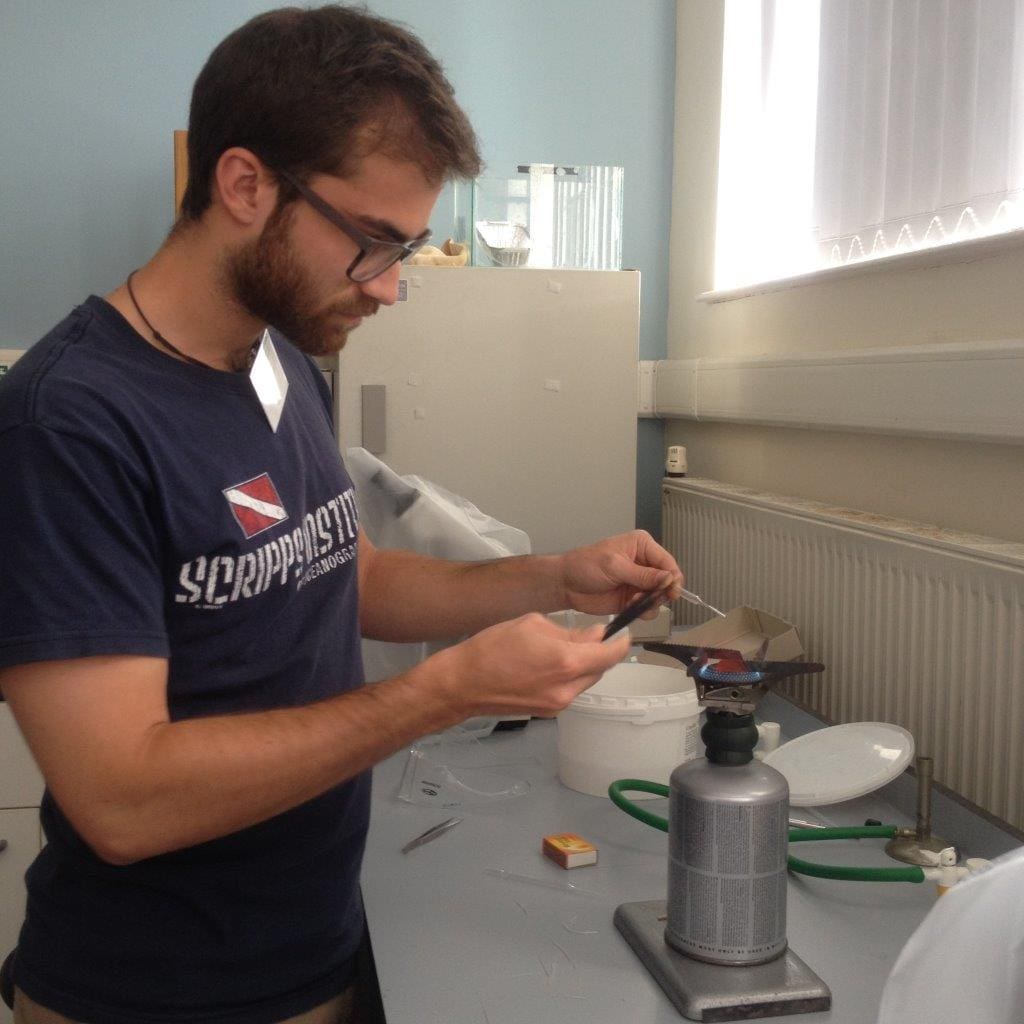
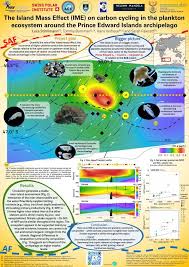 This is a great career that stimulates you at any moment of your life, and if you are curious, motivated, and resourceful, well… this job is waiting for you.
This is a great career that stimulates you at any moment of your life, and if you are curious, motivated, and resourceful, well… this job is waiting for you.




